
艺术的兴起重新聚焦媒介东亚录像 REFOCUSING ON THE MEDIUM: THE RISE OF EAST ASIA VIDEO ART 2022 / 3 / 5 -2022 / 5 / 8
艺术家: 山口胜弘 白南准 小野洋子 山本圭吾 金丘林 饭村隆彦 朴铉基 金顺基 张培力 王功新 鲍蔼伦 陈劭雄 耿建翌 朱加 李永斌 袁广鸣 杨振中 ARTISTS: Katsuhiro Yamaguchi Nam June Paik Yoko Ono Keigo Yamamoto Kim Kulim Takahiko Iimura Park Hyunki Soungui Kim Zhang Peili Wang Gongxin Ellen Pau Chen Shaoxiong Geng Jianyi Zhu Jia Li Yongbin Yuan Goang-Ming Yang Zhenzhong 鸣谢机构: 亚太媒体艺术 MAAP 纽约电子艺术联盟 阿姆斯特丹 LIMA Microscope 画廊 朴铉基遗产管理委员会 现代画廊 阿拉里奥画廊 光社影像中心 马凌画廊 SPURS 画廊 星美术馆 香格纳画廊 耿画廊 鸣谢个人(字母排序): Angel Chang Andrea Monti Connor Monahan 陈思羽 董冰峰 Elle Burchill Ella Liao 贺潇 Jessica Kim 山口裕康 陶寒辰 Yuka YOSHIDA Yujin Na Young Kwon 王姝曼 朱青生 Thanks to MAAP-Media Art Asia Pacific Electronic Arts Intermix LIMA Amsterdam Microscope Gallery Estate of Park Hyunki Gallery Hyundai Arario Gallery Light Society Edouard Malingue Gallery SPURS Gallery START MUSEUM ShanghART Gallery Tina Keng Gallery Angel Chang Andrea Monti Connor Monahan Chen Siyu Dong Bingfeng Elle Burchill Ella Liao He Xiao Jessica Kim Mr. Hiroyasu Yamaguchi Tao Hanchen Yuka YOSHIDA Yujin Na Young Kwon Wang Shuman Lao Zhu ( Zhu Qingsheng )
Peili / 《焦距》
画面录像装置(
视频
饭村隆彦 Takahiko limura / 《电视对电视》 共用天线电视录像装置 / 1983 朴铉基 Park Hyunki / 《无题 ( 电视 & 石头 ) 》 单通道录像装置 / 1984-2022 7 10 饭村隆彦 Takahiko limura / 《这就是拍摄了这些 的摄影机》 / 闭路电视录像装置
1 3 4 5 6 7 8 11 9 10 12 13 14 15 17 18 19 20 21 22 23 24 25 2 16 2 山本圭吾 Keigo
》《脚
》 单通道录像
白南准 Nam June Paik / 《扣子偶发事件》 单通道录像 / 1965 1 山口胜弘
闭路电视录像装置
3 4 王功新 Wang Gongxin / 《两平方有效空间》 闭路电视录像装置 / 1995-2022 6 王功新 Wang Gongxin
单通道录像装置
5 小野洋子 Yoko
闭路电视录像装置
/ 1980 12 张培力 Zhang
8
8
PAL
/
Yamamoto/ 《手 No.2 张培力
No.3 11 14
/ 1976-1977 陈劭雄 Chen Shaoxiong / 《视力矫正器 3 》 双通道录像装置 / 1996 18 金丘林 Kim Kulim / 《灯泡》 单通道录像装置 / 1975 陈劭雄 Chen Shaoxiong / 《改变电视频道便改变 新娘的决定》 共用天线电视录像装置 / 1994 17 20 李永斌 Li Yongbin / 《脸 -1 》《脸 -2 》《脸 -3 》 影像 / 1995-1997 耿建翌 Geng Jianyi / 《视觉的方向》 三通道录像 / 1996 19 21 朱加 Zhu Jia / 《与环境有关》 单通道录像 / 1997 朱加 Zhu Jia / 《永远》 单通道录像装置 / 1994 朱加 Zhu Jia / 《大衣柜》 单通道录像 / 1992 朱加 Zhu Jia / 《刻意的重复》 单通道录像 / 1997 22 鲍蔼伦 Ellen Pau / 《循环影院( Viewing Room )》 单通道录像装置 / 2000 25 金顺基 Soungui Kim/ 《银河之音》 单通道录像 / 1988 23 鲍蔼伦 Ellen Pau / 《行动剧场》 单通道录像 / 1995-1996 24 金顺基 Soungui Kim / 《瓦卡雷斯池塘》 双通道录像 / 1985
Katsuhiro Yamaguchi / 《宫娥》
/ 1974-1975
/ 《破的凳》
/ 1995-2020
Ono/ 《天空电视》
/ 1966-2022 8
朴铉基 Park Hyunki / 《无题(电视石塔)》 单通道录像装置 / 1979-1982
9
制式)
1996
Zhang Peili / 《水 辞海标准版》 单视频录像( PAL 格式) / 1991
袁广鸣 Yuan Goang-Min / 《盘中鱼》 单通道录像装置 / 1992 13 张培力 Zhang Peili / 《 30 × 30 》 单视频录像 (PAL 格式 )/ 1988 15 杨振中 Yang Zhenzhong / 《鱼缸》 多路视频 / 1996 16
体验录像作品的方式。闭路电视的决定性特征是 其画面的现场感。它不是对过去时间的记录,而 是对当下时刻的体验;它以电子形式呈现,并且 在实际体验和空间中展开的错位体验之间制造出 一个间隙。对艺术家来说,这个间隙成为一个观 念的“宝库”,使他们在便携式录像设备面世之际, 得以对这些技术以及录像所独有的其他特征—— 例如录像机内编辑、覆盖重录、实时监控和持续 录制等——进行思考和实验。 我们以白南准的第一件录像作品《扣子偶发事件》 (1965)作为本次展览的开篇之作。该作品拍摄 于艺术家获得了他的首台便携式录像机的当天。 这段难得一见的录像向我们展现了白南准对创作 录像作品的最初反应和冲动。从那一刻开始,大 量的艺术作品在一个屏幕文化始终存在、并且占 据主导地位的时代在全球范围内涌现出来。 进入展厅,观者首先看到的是几件使用闭路电视 展示的作品,如山口胜弘的录像装置作品《宫 娥》(1974-1975)、小野洋子的《天空电视》 (1966-2022)和王功新的《两平方有效空间》 (1995-2022),邀请观看者作为积极的参与者与 作品建立空间关系或进入到作品中。这种空间意 识——不仅是在闭路电视监视器的作品中——在 所有的作品中都是值得考虑的。每件作品都具有 一个延伸的背景,换言之,即一个超越了单个屏幕、 显示器或投影的空间关系,它们揭示了物理和观 念上的空间策略。每件作品都对录像媒介采取了 研究型展览“重新聚焦媒介:东亚录像艺术的兴起” (Refocusing on the Medium: The Rise of East Asia Video Art) 首次汇集来自日本、韩国和中国, 开创了录像艺术实验之先河的重量级艺术家,旨在 重新审视艺术家在东亚录像艺术兴起之时对于这 一媒介的处理方式,并以期为跨国性当代艺术媒 介的录像艺术在全球范围内的历史梳理做出贡献。 自 1965 年可携式摄影机索尼 Portapak 在日本发 明以来,各大洲的艺术家都获得了接触这一全球性 媒介的机会,并为其发展做出了贡献。在过去的十 年中,有关录像艺术历史的展览在亚洲各地举办。 当这些材料逐渐积累到一定程度,特定国家录像 艺术史的深度和细节逐而浮现;更值得赞赏的是, 这些展览和相关的研究材料亦扩充了既有的全球 录像艺术之历史,并对录像媒介的实验性实践和 国际交流进行了学术性阐释,激起人们更彻底地 反思录像艺术的解读方式。 作为一种特征鲜明的新技术和实验性艺术媒介, 录像艺术的到来没有文化传统的先行铺路,也没 有重要的艺术惯例或历史前提——但它却成为了 一种全新的全球性当代艺术工具。 这种媒介观使我们有理由来重新调整思路,重新 评估东亚艺术家对这段仍有争议的历史的贡献。 东亚艺术家是如何举起录像设备、并对这一新兴 的全球媒介展开实验的?这是否会改变我们看待 录像艺术史的方式? 一种不同的处理方式,鼓励人们对录像媒介的独 特性,以及东亚艺术家所做的实验性贡献进行深 入的思考。 此次展览中的许多作品,如饭村隆彦的《这就是 拍摄了这些的摄影机》(1980)和张培力的《焦距》 (1996),通过颠覆摄像机及显示器的传统用途, 对影像设备进行解构,同时也向观者对屏幕表征 及空间的体验发起质询。 本次展览所呈现的作品,仅仅是从东亚艺术家在 录像领域所取得的巨大成就中选取的典范之作。 我们希望观众能够通过这些作品,对录像媒介展 开全新的思考和观看。 ——策展人:金曼 从白南准(Nam June Paik)所牵涉的韩国、日本、 欧洲和美国的全球艺术网络开始,东亚艺术家便开 始利用这种文化非特定性的媒介,进入到新的交流 点和同样复杂的跨区域、跨国界网络中。在二十多 年的时间里,录像艺术将全球的艺术家勾连起来, 特别是 1968 年以来的日本、1978 年以来的韩国、 1983 年以来的台湾地区、1985 年以来的香港地区 和 1988 年以来的中国大陆。在很短的时间内,前 所未有的录像艺术实验跨越了各大洲和文化领土, 在工业化和发展中经济体中出现,使录像艺术成 为第一个全球性的当代艺术媒介 在 OCAT 上海馆举办的首届展览中,通过与韩国 白南准艺术中心的合作,以互联网直播的形式展 出白南准最具代表性的录像装置作品《电视佛》 [1974(2002)]。在展览的语境下,这一作品颇具挑 衅姿态地质疑了录像媒介的——现场性;对时间 和空间的扭变;幻象、现实和真实体验之间的紧 张关系;同时颠覆着这一媒介的观念策略;并连 接起本地和全球期待的动态网络。 展览主题“重新聚焦媒介”旨在激发人们思考录 像媒介的使用,以及我们如何看待录像媒介。当 我们开始比较这些基于录像媒介的艺术作品,我 们就会以不同的方式激活自身的感知,这些方式 超越了以电影和电影史为根基的叙事性推理。展 览以处理闭路电视监视器的艺术作品为起点,揭 示了录像与传统电影及影像之间的巨大差异,以 试图重塑观众对录像媒介的预期和假设,以及我们 关于展览
RefocusingontheMedium:TheRiseof
East Asia Video Art is the first exhibition to assemble key protagonists that initiated experiments with the medium of video originating from Japan, Korea, China, Taipei and Hong Kong. The exhibition proposes a re-examination of the artists approach to the video medium rising from East Asia and contributes to the global history of video art as a transnational contemporary art medium.
Since the Sony Portapak portable video recorder was invented in Japan in 1965, artists on every continent gained access and have contributed to the development of this global medium. Exhibitions exploring the histories of video art have featured across Asia in the past decade. The cumulative results have enhanced detail and depth to specific national histories laudably expanding an existing world history of video art. The exhibitions and accompanying research expose scholarly accounts of experimental practice and international exchange that provokes a more radical review of the way video art is considered.
medium and can this change the way we might approach the history of video art?
Beginning with Nam June Paik’s entangled Korea, Japan, European and American global art networks, artists from East Asia took up the culturally non-specific medium to enter new points of exchange and equally complex trans-regional and transnational networks. In little more than twenty years the video medium was channelled by artists living in Japan commencing from 1968, Korea 1978, Taiwan 1983, Hong Kong 1985 and mainland China from 1988. Within this relatively brief period first hand experimentation was occurring across the industrialised and developing economies straddling continents and cultures, situating video art as arguably the first truly global contemporary art medium.
As a new technology and experimental artistic medium with distinct characteristics, video art arrived with no specific cultural traditions, no significant conventions or established history – a new global contemporary art tool.
This view of the medium gives reason for a recalibration of thinking and reassessment of the contribution that artists from East Asia have made to this still contested history. How did artists in East Asia take up the apparatus of video and experiment with this new global
In the first iteration of this exhibition at OCAT Shanghai, a partnership with the Nam June Paik Art Center in Korea enabled a streamed a live broadcast of the iconic Nam June Paik video installation TV Buddha, (1974-2002) that was projected in the entry foyer of the exhibition. The projection was a provocation to question the video medium within the context of the exhibition – the liveness of the medium, the distortion of time and space, the tension between illusion, reality and authentic experience, the conceptual strategies used to subvert the medium, and the dynamics connecting local and global aspirations.
The frontline title “Refocusing on the Medium” is intended to trigger thoughts about the way the video medium is used and how we might observe it. Once we begin to compare the
art works use of the video medium, we are activating our perception in different ways that extend beyond a narrative reasoning that is the basis of film and cinematic histories. The exhibition begins with art works engaging with CCTV in order to demonstrate the greatest contrast between video and the traditions of film and cinema thereby resetting audience expectations and assumptions about the video medium and how we experience it. The defining quality of CCTV is the liveness of the imagery. It is not a record of time past, but an experience of the present moment, electronically rendered, creating a gap between the actual and an altered experience in space. This was a conceptual ‘treasure chest’ for artists to consider and experiment with when the technology first became available along with the portability of the video recording apparatus and other characteristics unique to video such as in-camera editing, record-over, live monitor viewing, and durational recording.
MeterSpace (1995-2022), call to attention the viewer as an active participant with a spatial relationship to or within the artwork. This spatial awareness is something to consider in all the works, not just the CCTV artworks. Each of the works has an expanded context, in other words a spatial relationship that exceeds the individual screen, monitor or projection demonstrating physical and conceptual spatial strategies. Each work puts forward a different approach to the video medium prompting further questions about the mediums’ unique characteristics and the experimental contributions made by artists with their origins in East Asia.
Several artworks such as Takahiko Iimura’s This is a Camera that Shoots This, (1980), and Zhang Peili’s Focal Distance, 1996, deconstruct the camera apparatus, the experience of screen representation and space through subverting the expected use of the video camera and monitor.
We open this exhibition with what is credited as the first video artwork by Nam June Paik, ButtonHappening, 1965. Made on the first day the artist acquired his first access to a portable video recorder. This rarely seen video shows us Paik’s initial response and impulse to create a video artwork. Since that moment a prolific number of art works have been produced globally in an age where screen culture is ever present and dominant.
Entering the exhibition works using CCTV such as, Katsuhiro Yamaguchi’s installation Las Meninas (1974-1975), Yoko Ono’s SkyTV (1966-2022), and Wang Gongxin’s TwoSquare
The works in this exhibition are but a few select examples coming out of an enormous field of accomplished video experiments by artists rising from East Asia. Through these works I hope viewers will tune into a fresh way of thinking and seeing the video medium.
Kim Machan, Curator
About the exhibition
Image: Portrait of Katsuhiro Yamaguchi, 2015 Image courtesy of Saitô
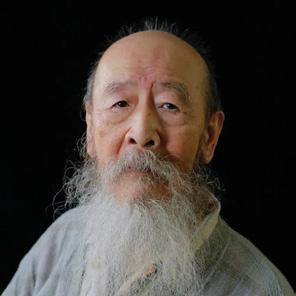
Sadamu
图:山口胜弘,2015
图片致谢 Saitô Sadamu
山口胜弘
Katsuhiro Yamaguchi
1928-2018,日本,东京
1928-2018, Tokyo, Japan
),荣获圣保罗 双年展大奖。山口胜弘的作品在日本和国际上被广泛 展出。
Born in Tokyo, Japan in 1928, Katsuhiro Yamaguchi created over 30 major video installations since 1974. A prolific artist and educator, he began his career establishing the pioneering art group Jikken Kôbô (Experimental Workshop) 19511958. Yamaguchi experimented in the field of ‘art and technology’ and ‘electronic arts’, and in 1971 founded the highly influential artist collective Video Hiroba. In 1977, he founded Sogô zôkei (Visual arts and mixed media) department in University of Tsukuba. He travelled to Europe and the United States for short tours, was a colleague of Yoko Ono and had contact with the fluxus art movement. His first sculptures in the 1950s, utilising transparent textured glass angled to provoke movement known as the ‘Vitrine’ series preceded his moving image experiments and installations. His interactive CCTV performances and installations experiments began in 1972 using the Sony Portapak in public places and galleries. In 1975 his work was awarded the leading prize at the San Paolo Biennale for his interactive CCTV video installation Las Meninas 1974-1975. Katsuhiro Yamaguchi exhibited extensively throughout his career both nationally and internationally.
讨了权力和监控的象征。 在山口胜弘的录像版本中,古典的巴洛克绘画与 电子媒介之相遇,通过录像这一媒介完成了其对 “再现”的革命性重组。当我们的身体在装置中 移动,我们将体验到观察与被观察、成为作品的 一部分或与之分离的多重转化。我们成为一个动 态的变化元素,继而在一件艺术作品中依次或同 时成为一个被动的观众、一个主动的参与者、一 个中心或去中心化的主体、抑或是一件艺术品本 身。对这幅 17 世纪的绘画的再现,与闭路电视对 我们自身形象的现场直播,这两者以一种虚拟的 表达方式联系起来,并构建出一个真实存在的当
medium, this prescient work by Yamaguchi can be counted to be among the first wave of interactive video installations globally. Yamaguchi constructed several video versions of the painting by Diego Velázquez Las Meninas (1656) using colour and black and white reproductions, CCTV and recorded video close ups of the painting. Through the medium of video, Yamaguchi expands the already complex relationship between the viewer and the sight lines within Velázquez’s self-portrait as the royal court painter. The Spanish artist’s deconstructive approach to representation, revealing power structures and the process of painting the painting, is one of the most disczussed elements of this famous work. Notably Yamaguchi’s Las Meninas replaces one of the King and Queen’s portrait with a CCTV camera contemporising the symbol of power and surveillance.
Katsuhiro Yamaguchi’s explicit intention in his earliest experiments with the video medium was to open up new ways to communicate with the viewer by incorporating the viewers’ presence into the mediated ‘liveness’ of CCTV technology. Demonstrating the international nature of the experiments with the video
In Yamaguchi’s video version, the meeting of classical baroque painting genre and electronic media embodies a revolutionary reorganisation of representation through the medium of video. By physically moving around Yamaguchi’s Las Meninas installation, we experience multiple thresholds between the act of observing and being observed; being part of the work and separate to it. Our role is a dynamic changing element, where we can sequentially or simultaneously consider being a passive spectator, an active participant, a central or decentralised subject of, or an object in, the art work. The reproduction of the 17th century painting and the CCTV live representation of our own image come together in a virtual expression, but also as an actual contemporary spatial moment.
(Text / Kim Machan)
山口胜弘在其最早的录像媒介实验中,就表现出 清晰的意图,即通过将观众引入到闭路电视技术 所传递的“现场性”中,从而开辟出与观众交 流的新途径。这件颇具先见之明的作品是全球 第一批互动式录像装置之一,它体现了录像艺 术实验的国际性特征。山口胜弘通过对原画作 品的彩色和黑白复制、利用闭路电视将迭戈· 委 拉斯开兹(Diego Velázquez)的《宫娥》(Las Meninas,1656)转换成若干影像,并通过特写镜 头将其记录下来。借由录像这一媒介,山口胜弘 延伸了观众与委拉斯开兹作为皇室宫廷画家的自 画像中的视线之间本已复杂的关系。这位西班牙 艺术家通过解构的表现手法——该手法是这幅名 作中被讨论最多的元素之一——试图揭示权力的 结构和绘制这幅绘画的过程。值得注意的是,山 口胜弘的《宫娥》(1974-75)用一台闭路电视摄 像机取代了国王和王后的肖像,在当代语境中探
代时空。(文 / 金曼)
山口胜弘,1928 年生于日本东京,自 1974 年以来创 作了 30 多件大型录像装置作品。作为一位多产的艺 术家和教育家,他在 1951 1958 年创立了开创性的 艺术团体“实验工房”(Jikken Kobo-Experimental Workshop),从此开启了他的职业艺术生涯。山口 胜弘在“艺术与技术”和“电子艺术”的领域进行实验, 并于 1971 年创立了极具影响力的艺术家团体“视频广 场”(Video Hiroba)。1977 年,他在筑波大学成立 了视觉艺术与混合媒体系(Sogô zôkei)。山口胜弘 曾到欧洲和美国进行短期旅行,是小野洋子的同事, 并与激浪派艺术运动有过接触。山口胜弘在 1950 年代 创作的第一批雕塑作品,使用透明质感的玻璃材料, 创造出呈现了运动的视觉效果的“玻璃橱窗”(Vitrine) 系列,随后他也展开对动态影像和装置的实验。1972 年,山口胜弘开始使用索尼 Portapak 摄影机,在公 共场域和美术馆空间中进行互动式闭路电视的表演和 装置实验。
1975 年,他凭借互动式闭路电视装置作品 《宫娥》(Las Meninas,1974-75
Katsuhiro Yamaguchi

山口胜弘,《宫娥》,1974-1975,闭路电视录像装置。该静帧为山口胜弘在作品《宫娥》前接受采访,出自 1995 年影片《山口胜弘的录像 装置与录像雕塑的记录》,图片由山口裕康先生提供。
Katsuhiro Yamaguchi, Las Meninas, 1974-1975, CCTV video installation. Still from the 1995 compilation The Document Video of Video Installation & Video Sculpture by Katsahiro Yamaguchi shows the artist being interviewed. Image courtesy of Mr. Hiroyasu Yamaguchi.
Nam June Paik

1932-2006,韩国,首尔
1932-2006, Seoul, South Korea
Nam June Paik was born in Seoul, South Korea in 1932 and spent his middle school days in Seoul and Hong Kong, and his high-school days in Kamakura, Japan. He studied aesthetics in the University of Tokyo, with a graduation thesis on Arnold Schoenberg. Moving to Germany in 1956 and studying European philosophy and modern music, he came to work actively with contemporary avant-garde artists and began to carve out his artist-identity by doing radical performances which were completely different from artistic canons and conventions back then. Afterwards he pursued a novel path of art making by means of new media. His media art gained momentum by his first solo show Exposition of Music-Electronic Television in which he presented televisions with inner circuits modified and manipulated, as a work of art.
Paik is a pioneering media artist working with various technologies in creative and experimental ways. He saw the artist’s role as consisting in thinking about the future and sought for better ways of global communication through art. Regarded as “one of the forerunners of a new breed of artists who are scientists, philosophers and engineers at the same time” and as “ a very special and genuine genius and futurologist with foresight”, Paik still lives on with us right here as “the most contemporary artist” today.
ButtonHappening, (1965) is Nam June Paik's earliest extant videotape, and possibly his first tape ever. Recorded in 1965 on the day he acquired his first Sony Portapak camera, this previously unknown work has been rediscovered and restored. Recorded on computer tape, this technically fragile piece documents a single performance action — Paik buttoning and unbuttoning his jacket. A spirit of conceptual Fluxus humor underlies this seminal recording.

白南准, 1932 年生于韩国首尔,在首尔和香港度过 了他的中学时代,在日本镰仓度过高中时光。他就 读于东京大学美学专业,其毕业论文研究阿诺尔德 勋 伯格( Arnold Schoenberg )。 1956 年,白南准移 居德国,学习欧洲哲学和现代音乐,并积极展开了 与当代前卫艺术家的合作。通过进行完全不同于当 时的艺术规范和传统的激进现场表演,白南准塑造 了其自身的艺术家身份。后来他又以新媒体为手段, 走上一条新的艺术创作道路。他的媒体艺术成为其 首次个展“对音乐的说明——电子电视”(Exposition of Music--Electronic Television)的核心,在其中, 他将内部电路经过修改和操控的电视机作为艺术作 品呈现出来。 白南准是一位极具开拓性的媒体艺术家,他以富有创
造性和实验性的方式来处理各种技术。他认为艺术家 背负着思考未来的使命,并通过艺术寻求更好的全球 交流方式。他被誉为“同时是科学家、哲学家和工程 师的新一代艺术家的先驱者之一”、“一个极其特殊 的、具有真正的天才和远见卓识的未来学家”。今天, 白南准仍然作为“最当代的艺术家”与我们同在。 白南准
Nam June Paik Image courtesy of Nam June Paik 图片致谢白南准 白南准,《扣子偶发事件》,1965,单通道录像,图片由纽约电子艺术联盟提供 Button Happening 1965, single-channel video, image courtesy of Electronic Arts Intermix (EAI) (New York, USA) 《扣子偶发事件》是白南准现存最早的——也极 可能是其第一部录像作品。这段录像创作于 1965 年的某天,在这天,白南准刚刚拿到自己的第一 部索尼 Portapak 摄像机。此作品虽然在拍摄技术 上不甚成熟,内容上也只是简单记录了一个重复 性动作——艺术家将夹克扣上再解开,但却体现 了白南准在录像艺术领域的早期探索性实践,同 时也包含着激浪派的幽默观念。
2015 )。小野洋子在 2009 年威尼斯 双年展上荣获终生成就奖——金狮奖。
小野洋子
Yoko Ono

生于 1933,日本,东京 b. 1933, Tokyo, Japan
Born in Tokyo, Japan in 1933, Yoko Ono is a multidisciplinary artist making significant contributions over a sixty-year career as a visual artist, singer, songwriter and peace activist. She moved with her family to New York in 1953, later living in London, New York and Tokyo where she became a key figure in the international development of Fluxus and Conceptual art. Her early works were based on verbal or written instructions to the audience, for example Painting to Be Stepped On (1960–61). Such instructional approach also could be found in her performance Cut Piece (1964). In collaboration with her late husband, the Beatles legend John Lennon, BedIn (1969) performed her commitment to world peace. Ono has exhibited widely across the world, including her solo show of films and sculptural works in Whitney Museum of American Art (1989), Yes Yoko Ono at the Japan Society Gallery in New York City (2000) which toured around the world, and a recent retrospective of her early art at the Museum of Modern Art in New York City (2015). She received a Golden Lion for Lifetime Achievement at the 2009 Venice Biennale.
SKY TV (1966-2022) is a continuous twentyfour hours a day live CCTV feed from a camera positioned on the roof of the exhibition building. The camera pointed up to the open sky connects with a monitor placed on the floor in the subterranean gallery. This seemingly simple concept belies the extraordinary accomplishment the artwork made when it was first conceived in 1966 and the enduring relevance it has today. The idea of television as a conveyor of mass information-entertainment and as a surveillance technology is peacefully subverted and repurposed, enriching the medium with a new focus and possibilities. The exploitation of the medium specific qualities of video is accomplished through the artist’s astute understanding of video’s transgressive spatial potential in a minimalist gesture in order to manifest the sublime. SKY TV captures an incomprehensible quantity of sky because behind the flat actual surface of the monitor and the sky that represents, the sky the camera aims toward in fact continues beyond our vision. The speculative nature of infinite space is intrinsic in this conceptual video piece while also addressing the sky as a most elemental shared spatial phenomenon. The sky is a recurring theme in Yoko Ono’s works as an artist and musician and in this piece, the depth of the sky represented in the monitor is only limited by our imagination.
(Text / Kim Machan)
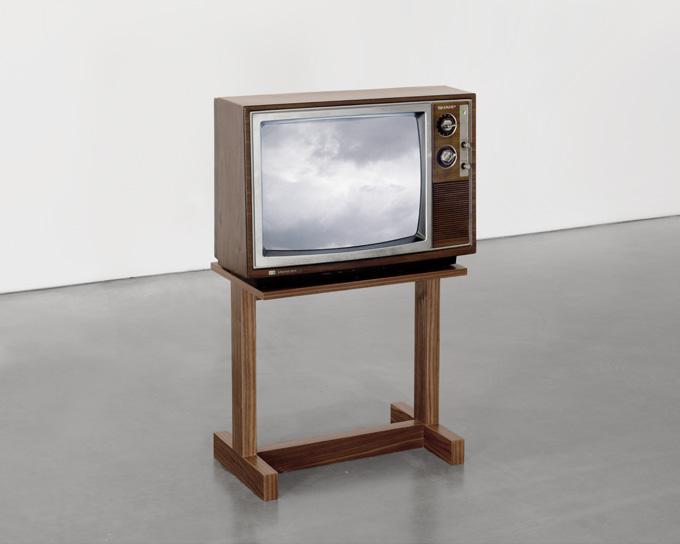
1966-2022, CCTV video installation.Installation view of
the Thing-in-Itself, Andrea Rosen Gallery, New York (2015), curated by Robert Hobbs. Photographer: Lance Brewer. Image courtesy of Andrea Rosen Gallery.
小野洋子, 1933 年生于日本东京,是一位跨学科的 艺术家,在其六十多年的职业生涯中,她作为视觉 艺术家、歌手、作曲家和反战活动家,在艺术和许 多领域做出了重要贡献。小野洋子于 1953 年随家人 移居纽约,后来又在伦敦、纽约和东京生活,成为 推动了激浪派和观念艺术的国际发展的关键人物。 她早期的作品,例如《可以站上去的画》(Painting to Be Stepped On, 1960-61 ),以对观众的口头或 书面指示为基础。这种指令性的方法也可以在她的 行为表演作品《切片》(Cut Piece,1964 )中找到。 她与已故丈夫、披头士乐队的传奇人物约翰 · 列侬 ( John Lennon )合作的《床上和平运动》(Bed-In, 1969 ),履行了她对世界和平的承诺。小野洋子的 作品在世界各地被广泛展出,其中包括:她在惠特 尼美国艺术博物馆举办的首次回顾展( 1989 );在 纽约市日本协会美术馆举办的“ Yes 小野洋子”(Yes Yoko
,
及近期在纽约现代艺术博物馆举办的小野洋子的早
Ono
2000 ),该展在世界各地巡回展出;以
期作品回顾展(
©Yoko
图片由
由小野洋子提供 《天空电视》(SKY TV,1966-2022)将安装在展 览空间楼顶的摄影机拍摄的内容,用闭路电视进 行一天 24 小时的实时播放。摄像机对准开阔的天 空,并与放置在地下展厅地上的监视屏相连。这 个看似简单的想法,掩盖了它在 1966 年被首次构 思出来时取得的非凡成就,以及它在今天仍具有 的持久意义。电视作为大众信息和娱乐的传送者, 以及作为监视技术,被艺术家以和平的方式颠覆 和重新利用,使之被赋予新的焦点和可能性。艺 术家敏锐地觉察到录像具有超越空间的潜能,继 而以极简主义的姿态来体现这种崇高性,实现了 对录像媒介特性的利用。《天空电视》所捕捉的 无限天空超出了我们理解的范畴,因为在监视屏 实际表面和它所展现的天空背后,摄像机所瞄准 的天空其实一直延续到我们的视野之外。这件观 念录像作品除了引发我们对无限空间的想象,它
Yoko
Ono Photo by Matthew Placek
Ono
Matthew Placek 拍摄,
同时也强调了天空即是一个最基本的共享空间。 天空是小野洋子作为艺术家和音乐家在创作中反 复处理的主题,在这件作品中,由监视屏所展现 的天空的纵深,仅仅受限于我们的想象力。 (文 / 金曼)
小野洋子,《天空电视》,1966-2022,闭路电视录像装置。该图为 纽约 Andrea Rosen 画廊由 Robert Hobbs 策划的“The Thing and the Thing-in-Itself”展览现场(2015),摄影:Lance Brewer,图片版权 归 Andrea Rosen 画廊所有。 Yoko Ono, SKY
TV,
The Thing and
Japan
Keigo Yamamoto
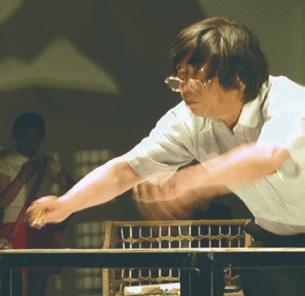

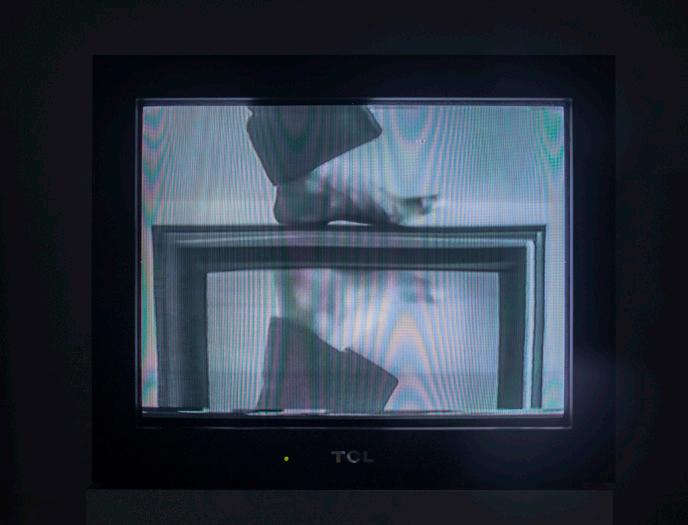
生于 1936,日本,福井 b. 1936, Fukui, Japan 山本圭吾在作品《手 No.2》 和《脚 No.3》中, 通过录像和闭路电视监视屏的即时回放功能,探 讨了监视屏的物理性和身体的延伸。这些作品记 录了孤立的身体部位(手和脚)与作为影像框架 的监视屏之间的互动。手和监视屏的第一次互动 被拍摄下来,然后在监视屏上进行播放,再对手 和之前的影像之间的互动进行再次拍摄。在《手 No.2》中,我们看到同一只手被记录和再记录, 使得手和手臂出现在相互分隔、又相互关联的表 现场域。同样的原理也被运用在《脚 No.3》中, 即在一台监视屏上表现一台监视屏中所表现的监视 屏上的内容。层层叠加的影像将监视屏内部的身体 延伸到我们面前基座上的监视屏之外的界域。在展 览中,观众可以直接触碰监视屏,从而直接反向连 接,成为艺术品的一部分;正是因为这种可能性, 监视屏和它所占据的空间才成为了“现场”。 (文 / 金曼)
(Text / Kim Machan)
山本圭吾,《脚 No.3》,1977,单通道录像,图片由艺术家和阿姆 斯特丹 LIAM 提供。 Keigo Yamamoto, Foot No.3 1977, single-channel video, image
山本圭吾是一位日本媒体艺术家, 1936 年生于日本 福井,自 1968 年开始创作录像艺术。作为录像艺术 家团体“视频广场”( Video Hiroba )的创始成员之一, 山本圭吾对日本最早一批录像艺术实验做出了重大 贡献。他是上世纪 70 年代“网络艺术”运动( network art )的领军人物之一,这一新的艺术形式通过将计 算机、声音和电讯融合起来,带来了不同文化之间 的相遇。基于在录像艺术方面的创作,山本圭吾于 1985 年创立了福井国际录像双年展,该展一直延续 到 1999 年。山本圭吾的作品在许多重要的国际展览 中展出;他作为一名教育工作者,培养了一批年轻 的艺术家。自 1988 年起,他开始担任武藏野美术大 学教授,并在 2000 年成为京都精华大学教授,兼任 该校电影与媒体研究中心主任。 2014 年,日本媒体 艺术节将终身成就奖授予山本圭吾,以表彰他对日 本媒体艺术和教育的贡献。 山本圭吾
Keigo Yamamoto ©Keigo Yamamoto and
Born in Fukui, Japan in 1936, Keigo Yamamoto is a Japanese media artist who started producing video art from 1968. As an original member of the video artists’ collective Video Hiroba, he made significant contributions to the first wave of experimentation with video in Japan. He was a key figure leading the ‘network art’ movement in the 1970s, a new art that brought about encounters between different cultures in the fusion of computers, sound and telecommunication. His work in video art led him to establish the Fukui International Video Biennale in 1985 that continued until 1999. Yamamoto regularly exhibited in many significant international exhibitions and as an educator has nurtured younger generations of artists. From 1988, he was a professor at Musashino Art University, and later became a professor and the director of the Film and Media Research Center, at Kyoto Seika University in 2000. In 2014 he was awarded the Japan Media Arts Festival Achievement Award for his lifetime contribution to media arts and education in Japan. Media Arts Festival Archive 图片由艺术家及日本文化厅媒 体艺术祭档案库提供
artist and Amsterdam LIMA. 山本圭吾,《手 No.2》,1976,单通道录像,图片由艺术家提供。 Keigo Yamamoto, Hand No.2, 1976, single-channel video, image courtesy of the artist.
Keigo Yamamoto contemplated the physicality of the monitor and the extension of the body through the immediate play back capability of video and CCTV monitor in his works Hand No.2 (1976) and Foot No.3 (1977). The works record interaction between the isolated body part – the hand or foot - with the monitor as the framing device of the video. The first interaction between hand and monitor is recorded, then played on the monitor and filmed again with a response to the earlier recording. What we see in Hand No. 2 is the same hand recorded and re-recorded locating the hand and forearm in separate but connected realms of representation. The same principle is explored in Foot No.3. A representation of a representation of a monitor within a representation of a monitor within a monitor. Layers of representation extend the body from the inner image of the monitor to the outer limits of the existing monitor on the plinth before us. Viewing this work in the exhibition it is possible to physically touch the monitor and in turn directly connect to become part of the art work and it is with this possibility the monitor and the space it occupies is ‘live’.
courtesy of the
Kim Kulim
生于 1936,韩国,尚州
b. 1936, Sangju, South Korea
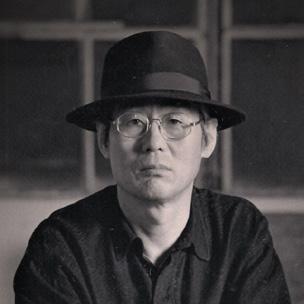
Born in Sangju, South Korea in 1936, Kim Kulim lives and works in Seoul. Kim holds a significant status in Korean contemporary art history as a founder of Korean experimental art. Retaining a rebellious attitude towards existing values and customs, Kim has produced a wide scope of experimental works ranging from paintings, prints, sculptures, installations and performances to land art, video art and mail art. He has also been involved in experimental plays, films, music and dance. In 1969, he released Relics of Mass Media, considered Korea's first mail art and also produced TheMeaningof1/24Second, a seminal work in the history of Korean experimental film. Kim was a founding member of AG (Korean AvantGarde Association), through which he led avantgarde artistic practices that emphasized concept and process. In the 1970s, he founded The Fourth Group, an avant-garde art group consisting of young artists and intellectuals in various fields, pursuing intermedia art combining art, theatre, film, fashion and music. Later in the decade, he set off to Japan to begin experimentation with print and video art, and in the 1980s, he traveled to the United States to seek new ways of artistic practice.
and present are in flux and exchange. The work questions this collision or co-existence of the past and present, in other words – HwanWeon ( 환원 , 还原 ).
Kim Kulim’s first investigations into the video medium were directed toward the real and the virtual medium specific qualities of light and time. The 1:1 scaled video recording of a light bulb turning on and off in a casual 10 second rhythm is combined in the video installation with the actual light bulb suspended next to the monitor. The light bulb in the monitor alternates with the actual light bulb, shifting recorded time into harmony and conflict with perceptions of real time in a time lapse distortion. Philosophical and empirical questions about the nature of light - the speed of light that directly relates to concepts of time – are summoned in this work in the contemplation of the recorded time and the representation within this video installation of the light bulb that was originally recorded in 1975. The age of the light transferred to our eye from the monitor is light being transmitted now in the live moment, while existing with the contradiction that the light is a recording of a much older light, now over 45 years old.
 / Kim Machan)
/ Kim Machan)
金丘林, 1936 年生于韩国尚州,目前生活和工作于 韩国首尔。作为韩国实验艺术的奠基人,他在韩国 当代艺术史上占据了重要的位置。 金丘林的创作对现有的价值观和风俗习惯持反叛态 度,他的实验性作品内容广泛,包括从绘画、版画、 雕塑、装置、行为表演,到大地艺术、录像艺术和 邮寄艺术。此外, 他还参与过实验戏剧、电影、音 乐和舞蹈的创作。 1969 年,他创作了被认为是韩国 第一件邮寄艺术作品的《大众传媒的遗物》(Relics of Mass Media),并制作了韩国实验电影领域的 奠基之作《 1/24 秒的意义》(The Meaning of 1/24 Second)。他是韩国前卫艺术协会( AG )的创始成 员之一,并通过该协会领导了强调观念和过程的前 卫艺术实践。上世纪 70 年代,他成立了由各领域年 轻艺术家和知识分子组成的前卫艺术团体“第四集 团”( The Fourth Group ),该组织旨在追求艺术、 戏剧、电影、时尚和音乐相结合的跨媒介艺术。十 年后,他启程前往日本,开始了印刷和录像艺术的
实验,并在 80 年代前往美国追寻新的艺术实践方式。 金丘林
类似于暂停时间和重现过去。因此,过去的事件 在当下的瞬间,通过一种新的视角被体验。过去
便质疑了过去与现在的碰撞,或共存,即——还 原(환원)。 金丘林对录像媒介的初探,聚焦于这一真实和虚 拟的媒介中光与时间的特殊性。在这件录像装置 中,录像画面按 1:1 比例记录了一只电灯泡以 10 秒 钟的间隔开与关,一只真实的灯泡悬挂在监视屏 的旁边。监视屏中的灯泡和实际灯泡交替点亮, 在一种缩时时间的扭变中,引发了记录时间与对 真实时间的感知之间的和谐与冲突。通过对记录 时间的思考,以及在这件录像装置中重现那只最 初于 1975 年拍摄的灯泡,有关光的本质的哲学和 经验问题——光速直接关系到时间的概念——在 这件作品中被召唤出来。从监视屏中传递到我们 眼睛里的光,正是当下被传递出来的光,而矛盾 的是,它所记录的光却更为久远,距离当下已经 有四十五年。(文 / 金曼) Traces of time were stored within the medium called video. It is similar to pausing time and reproducing the past. Consequently, the events of the past are experienced through a new perspective in the present instant. The past
时间的痕迹被存储在一种叫做录像的媒介中。它
和现在都处在不断的变化和交换之中。这件作品
金丘林,《灯泡》,1975,单通道录像装置, 图片由艺术家提供。
(Text
Kim Kulim, Light Bulb 1975, singlechannel video installation, image courtesy of the artist.
Takahiko Iimura
生于 1937,日本,东京 b. 1937, Tokyo, Japan
Born in Tokyo, Japan in 1937, Takahiko Iimura is a pioneering artist known for his work with film, video, installation, performance, and digital technologies spanning more than 50 years. Iimura first began working with film in 1960 and was instrumental in the burgeoning Japanese experimental and independent film scene. Iimura moved to the US on a Fellowship from Harvard University in 1966 and soon immersed himself in the mid-60s New York experimental film and art community. Early videos were included in exhibitions at the Museum of Modern Art of New York and PS1 (1975), and Centre Georges Pompidou in Paris, France (1977), while other performance based works and interactive installations were featured in the 1979 two-person exhibition New Video (with Shigeko Kubota) at the Whitney Museum of American Art, New York.

Iimura’s monitor installation TV for TV (1983), originally presented in Osaka and later exhibited in the 1994 Guggenheim Museum survey show JapaneseArtAfter1945:Scream
AgainsttheSky consists of two identical and untuned TV monitors facing each other with their broadcasts, playing infinitely for an audience solely of each other. The art work, originally designed to broadcast a different local television station on each monitor, animates the sculptural monitors as close relational communicators, albeit in a oneway stream of broadcast content. Because the monitors are tightly pushed up ‘facing’ against each other the video sculpture implies an embodied elemental animism, an electronic intimacy, and implied abstract communication.

饭村隆彦, 1937 年出生于日本东京,是一位先锋艺 术家,其跨越 50 多年的创作生涯,涉及到电影、录 像、装置、行为和数字技术领域等诸多领域的创作。 饭村隆彦自 1960 年开始从事电影方面的工作,并在 蓬勃发展的日本实验和独立电影界发挥了重要作用。 1966 年,他获得哈佛大学提供的奖学金,并移居美国, 很快便投身到 60 年代中期纽约实验电影和艺术的群 体中。他早期的录像作品被收录在纽约现代艺术博 物馆和 PS1 馆( 1975 )、法国巴黎蓬皮杜艺术中心 ( 1977 )的展览中,以行为表演为基础的作品及互 动装置曾在 1979 年惠特尼美国艺术博物馆的双人个 展“新录像”(与久保田成子一起)中展出。
饭村隆彦
饭村隆彦,《电视对电视》,
,共用天线电视录像装置,图片由 Microscope 画廊(纽约,美国)提供。 Takahiko
TV
TV,
CATV
饭村隆彦的电视装置《电视对电视》(TV for TV,1983)最初在大阪展出,后来在 1994 年古 根海姆博物馆的研究性展览“1945 年以后的日本 艺术 : 向天空呐喊”(Japanese Art After 1945: Scream Against the Sky)中呈现。作品由两台完 全相同且未调谐的电视监视器组成,两台机器面 对面放置,并作为对方唯一观众,进行无尽的相 互播放。这件作品最初的设计是在每台电视屏上 播放来自不同的地方电视台上的内容;作品将监 视屏雕塑转化为亲密的交流者,尽管所播放内容 是单向的。由于两台监视屏紧紧地“面贴面”, 因此这件录像雕塑也暗示了一种原始的万物有灵 的观念,以及一种电子化的亲密感和隐晦的抽象 交流。
1983
Iimura,
for
1983,
video installation, image courtesy of Microscope Gallery (New York, USA).
Image courtesy of Microscope Gallery ©2018 Microscope Gallery 图片致谢 Microscope 画廊
Takahiko Iimura
饭村隆彦,《这就是拍摄了这些的摄影
机》,1980,闭路电视录像装置,图片由
Microscope 画廊(纽约,美国)提供。
Takahiko Iimura, This is A Camera Which Shoots This, 1980, CCTV video installation, image courtesy of Microscope Gallery (New York, USA).
(1980) is a
installation consisting of two video cameras and two monitors arranged in pairs opposite each other with the title sentence centered on the wall between them. In this work first exhibited in 1980 at Tokyo’s American Center, Iimura creates a vicious logic cycle by redirecting the signals of the cameras so that each appears to be recording itself,
emphasizing the instant playback possibilities of video that allow one to be simultaneously recording, recorded, and to watch the recording as it happens. Additionally, This is A Camera Which Shoots This continues and expands upon explorations of the semiotic differences between Japanese and Western cultures through the medium of video that Iimura began in the 1970s.

饭村隆彦的代表作《这就是拍摄了这些的摄影机》 (This is A Camera Which Shoots This,1980) 是一件录像装置作品,由两台摄像机和两个监视 屏对立呈现,中间墙上附有作品标题中的语句。 在这件最初于 1980 年在东京美国中心(Tokyo’s American Centre)展出的作品中,饭村隆彦通过 改变摄像机的信号传输方向,使每个摄像机看起 来都在拍摄自己,创造了一个打乱了逻辑的循环, Iimura’s iconic This is A Camera Which Shoots This
以强调录像的即时回放性,从而将录像和被录像 置于同一时间语境中。除此之外,《这就是拍摄 了这些的摄影机》还借由录像之媒介,将日本和西 方文化在符号学上的差异进一步引申和扩展,这是 饭村隆彦自上世纪 70 年代以来一直探索的主题。
video
Park Hyunki
1942-2000,日本,大阪
1942-2000, Osaka, Japan
Born in Osaka, Japan in 1942, Park Hyunki is widely known as a precursor to video art in Korea for developing his own artistic vocabulary with the use of then a rare medium. Park’s approach to video and technology resembles the thriving interests of objects and materiality in Korean art of the 70s, which rejected a Western Modernism that concentrated on artistic expression and intervention. By juxtaposing found objects from nature with contemporary technologies, Park contrasted reality to fiction and nature to culture. Featuring organic elements, such as stones and water, Park rearranged and modified objects which are not commonly considered to be art. Denying the theatrical and narrative quality of video, Park mainly concentrated on the contemplation of materials and perception. His persistent and solitary effort to engage in video was indeed a revolutionary one in his time and the contribution he has made to Korean video art is truly immeasurable.
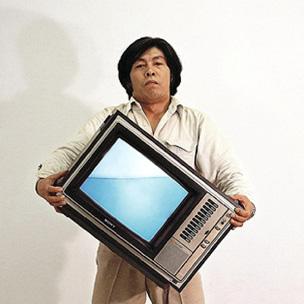
These two works by Park Hyunki are representative works from his Untitled series (1976-1979) that utilize monitors showing videos of stones places among actual stones. This juxtaposition of technology and nature is a motif repeatedly in these stone tower works. These works are imbued with Park’s desire to harmonize contrasting elements and to celebrate the beauty of simple phenomena imbued with spiritual almost metaphysical power.
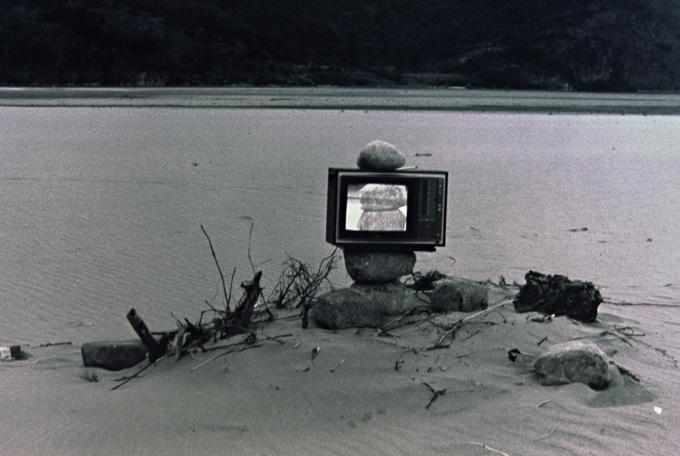
In line with many of his contemporaries in Korean art during the 1970s, Park’s practice emphasized objects and materiality and their philosophical underpinnings. By juxtaposing found objects from nature, Park contrasted reality to fiction and nature to culture. Featuring organic elements, such as stones and water, Park rearranged and modified objects which are not commonly considered to be art. Denying the theatrical and narrative quality of video, Park mainly concentrated on the contemplation of materials and perception.

朴铉基,1942 年生于日本大阪,于 1945 年移居至韩 国大邱,是韩国录像艺术的先驱之一,他利用录像这 一当时罕见的媒介,发展出属于自己的艺术语汇。朴 铉基对录像和技术的处理方式,正与上世纪 70 年代 韩国艺术界——拒绝了西方现代主义对于艺术表现和 干预的关注——对物体和材料性持续增长的兴趣相平 行。通过将自然界中的现成品相并置,朴铉基将现实 与虚构、自然与文化进行了对比。他使用石头、水等 有机材料,将通常不被认为是艺术的物体进行重新排 列和改造。他否定了录像的戏剧性和叙事性,而聚焦 于对材料的沉思和感知。他对独立从事录像创作的执 着,在当时成为一种革命性的努力,他对韩国录像艺 术所作的贡献诚然是不可估量的。 朴铉基
朴铉基,《无题 ( 电视 & 石头 )》,1984,单通道录像装置,图片由 朴铉基遗产管理委员会和现代画廊提供。 Park Hyunki, Untitled (TV & Stone), 1984, single-channel video installation, image courtesy of Estate of Park Hyunki and Gallery Hyundai. 这两件作品是朴铉基的《无题》系列(1976-1979) 的代表作,艺术家将播放着石头影像的监视屏放 置在真实的石头中间。这种技术与自然的并置是 这些石塔作品中反复出现的主题。它们亦反映出 艺术家希冀调和对比强烈的元素的愿望,以及对 简单现象中的美的拥护,这些现象充满了近乎玄 幽的精神力量。 与上世纪 70 年代韩国艺术界的许多同代创作者一 样,朴铉基的实践也强调了客体性、物质性及其 哲学基础。通过将自然界中的现成品相并置,朴 铉基将现实与虚构、自然与文化进行了对比。他 使用石头、水等有机材料,将通常不被认为是艺 术的物体进行重新排列和改造。他否定了录像的 戏剧性和叙事性,而聚焦于对材料的沉思和感知。
朴铉基,《无题(电视石塔)》,1979-1982,单通道录像装置,图 片由朴铉基遗产管理委员会和现代画廊提供。
Park Hyunki, Untitled (TV Stone Tower), 1979-1982, single-channel video installation, image courtesy of Estate of Park Hyunki and Gallery Hyundai.
Soungui Kim
生于 1946,韩国,扶余 b. 1946, Buyeo, South Korea
Born in Buyeo, South Korea in 1946, Soungui Kim is a multimedia artist, one of the pioneers in multidisciplinary art of the early 70s. She has been living and working in France since 1971, actively teaching, creating, and establishing her career for the last 50 years. Kim is an artist with complex aspects that cannot be defined in a single way nor in the dichotomy of situations. Her interest in Eastern and Western philosophies and the experimentation with various artistic medium led Kim to incorporate situational, experiential and accidental processes into her practice.

Artist Soungui Kim lives a life that is not confined to formalities, but pioneers new roads of art ahead of her times, creating new paths in untrodden land. Kim has constantly blazed trails in new territories and has been introduced to the public as a case of convergence between disciplines and genres including those involving science and technology, and the arts. From the deconstruction of painting, to spectator-participatory events in public places, challenges in video and multimedia, and comparative studies in culture and philosophy of East and West, Soungui Kim's artistic journey has always been one step ahead.

round-trip journey from Paris to Seoul, then Seoul to Paris, simultaneously recorded and edited by the limited time of a sixty-minute videotape, created an artwork where its recorded time is equal to its edited time. In this work, wherein the directions of coming and going, and time are mixed-up and disarranged, she has created the time of another route that travels neither to Paris nor to Seoul, containing the eighteen-hour flight time, sixty-minute of videotape, and the eight-hour time difference of two countries.
The title Voie-VoixLactée is a play on words made by arranging voie (way) from Voie lactée (Milky Way) together with voix (voice), its homonym. Such an example can be frequently found in works by Kim, who is known to love ‘language games’. Passing beyond the limitations of Eastern and Western ideas and embracing even the conditions that cause confrontation and contradiction, VoieVoixLactée conceals the diverse weaves of interpretation.*
*Excerpts from Mun Hyejin, "Video-O Time-One's Place", Lazy Clouds: Soungui Kim (Seoul: National Museum of Modern and Contemporary Art, 2019)
金顺基,1946 年生于韩国扶余,是一位多媒体艺术家, 也是跨学科艺术的先驱之一。自 1971 年以来,她一直 在法国生活和工作。在过去的 50 年里,她积极致力于 教学、创作和发展自己的艺术事业。金顺基的创作具 有复杂和多面性,既不能用单一的方式来定义,也不 能用二元对立的方式来描述。她对东、西方哲学的有 着浓烈的兴趣,并对各种艺术媒介展开实验,这使得 她的作品呈现出情境性、体验性和偶然性。 金顺基的创作不拘泥于任何形式,而是在时代的前面 发掘新的方法,在未知的领域开辟新的路径。她作为 跨学科和流派的典范(涉及科技和艺术等)为公众所 知,并持续在新的领域开拓创新。从对绘画的解构, 到在公共场域呈现观众参与式的活动,再到对录像和 多媒体的挑战,以及涉及东西方文化和哲学的比较研
究,金顺基的艺术之旅始终引领时代。 金顺基
金顺基的《银河之音》(
小 时的录像。从巴黎到首尔、首尔到巴黎的往返旅
18 个小时的飞行 时间、60 分钟的录像带时间和两个国家 8 小时的 时差。 《银河之音》的标题是将“Voie lactée”(银河) 中的“voie”(路)与“voix”(声音)排列在一 起而产生的文字游戏。这样的例子在以热衷“文 字游戏”而著称的金顺基的作品中经常出现。《银 河之音》超越了东西方思想的局限性,甚至对引 发对抗和矛盾的处境欣然接受,让多样化的阐释 交织在一起。* * 引自 Mun Hyejin,《Video-O Time-One's Place》,“金顺基: 懒惰的云朵”,首尔:国立现当代艺术博物馆,2019) Soungui Kim's Voie-VoixLactée (1988) is a work that takes the journey between Paris and Seoul, and turns it into a one-hour video. The 金顺基,《银河之音》,1988,单通道录像, 图片由艺术家提供。
Voie-Voix Lactée, 1988)将巴黎和首尔之间的旅程转变为一段 1
程,被同时用一盘 60 分钟的录像带记录和编辑, 创造了一件记录时间和编辑时间相等的艺术作品。 在这件作品中,来去的方向和时间都是混淆和混 乱的,艺术家创造了一条既不去往巴黎也不去往 首尔的路线的时间,其中包含了
Soungui Kim, Voie-Voix Lactée, 1988, single-channel video, image courtesy of the artist.
(1985) is shot in real time without editing to unify the fictitious time of video and the real time of the spectator. The image becomes visible and invisible as the artist repeatedly zooms in and out: a visual repetition of a repeated nonsensical narrative. The work physically embodies the state of “unity of self and things,” by synchronizing the breathing of the video and of the person filming. The act of repeatedly opening and closing the aperture of the lens according to the tempo of the artist’s inhalation and exhalation
is a natural experience of penetrating the medium called video with the body to become “One” with it. Soungui Kim, who sees body and mind, existence and non-existence, emptiness and form, knowing and not knowing, visibility and invisibility, as one, is embodied simply and clearly through the manipulation of video equipment.*
*Excerpts from Mun Hyejin, "Video-O Time-One's Place", Lazy Clouds: Soungui Kim (Seoul: National Museum of Modern and Contemporary Art, 2019)

金顺基,《瓦卡雷斯池塘》,1985,双通道录像,图片由艺术家提供。 Soungui Kim, Etang de Vaccarèes, 1985, dual-channel video, image courtesy of the artist. 《瓦卡雷斯池塘》(EtangdeVaccarèes, 1985)是 一件通过实时拍摄且未经剪辑的手法,以统一录 像的虚拟时间和观众的真实时间的作品。随着艺 术家反复将镜头拉近和拉远,画面在可见和不可 见之间交替,产生了一种重复着无意义叙事的视 觉重复。作品通过将录像和拍摄者的呼吸同步, 从而将“心物合一”的状态实际呈现出来。基于 艺术家呼吸的节奏反复打开和关闭镜头光圈的举 EtangdeVaccarèes
动,成为一种将录像媒介与身体相互渗透、合为 “一体”的自然体验。在金顺基看来,身体与心灵、 存在与不存在、虚空与形式、知与不知、可见与 不可见都是浑然一体的,并可通过对录像设备的 操控使之简单而清晰地体现出来。* * 引自 Mun Hyejin,《Video-O Time-One's Place》,“金顺基: 懒惰的云朵”,首尔:国立现当代艺术博物馆,2019)
Zhang Peili

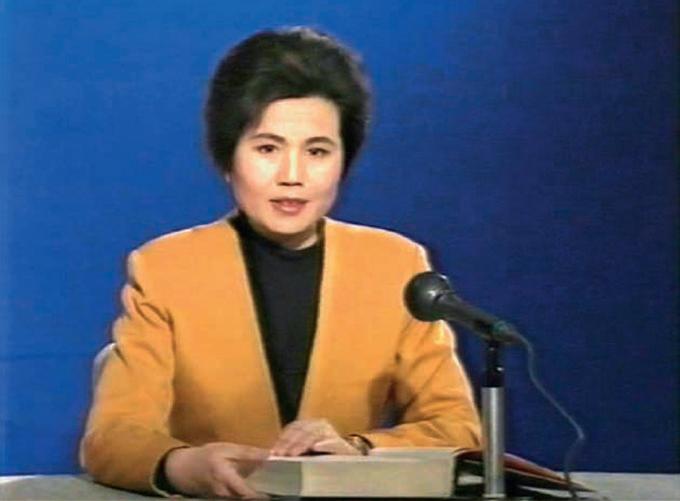
生于 1963,中国,杭州
b. 1957, Hangzhou, China
Zhang Peili was born in Hangzhou, China and studied oil painting during the early 1980s at the China Academy of Art in the same city. Zhang is considered one of the seminal contemporary artists in China as a key member of the Pond Society – the contemporary art movement based in Hangzhou. In 1988 Zhang’s created his first video artwork 30 x 30, that is recognised as the first video artwork created in China. In the 1990s, Zhang continued to experiment with video and new media, shifting entirely from painting after 1994 to work across a variety of media including video installation and immersive multimedia installations since the early 2000s. In 2003, Zhang founded the New Media Department at the China Academy of Art, one of the first of its kind in the country. In 2010, Zhang was awarded the prestigious China Contemporary Art Award for lifetime contributions to the field. He is Associate Professor at the China Academy of Art, as well as being Executive Director of OCAT Shanghai, the first museum in China to specialise in new media arts and architecture.
(colour, sound), looping Courtesy of SPURS Gallery,1988
Single-channel video (projector),

Standard Version from Cihai Dictionary ,Single-channel video (monitor) 9 35’’ (colour, sound) looping, Courtesy of the artist,1991
Considered to be the first video artwork created in China, 30×30 accentuates characteristics only possible in the video medium. With initial access to video recording equipment Zhang had the opportunity to experiment and when faced with this open possibility, chose to utilise the exceptionally long tape duration of the video recorder. The standard 180-minute video cassette was filled entirely with the repetitive action of breaking a 30×30 cm mirror and gluing it back together. The two main characteristics of the work, repetition and endurance, shuck open concepts of reason and intention through absurdity. These experimental endurance works would never be made on film because of the expense and cinematic conventions already established.
Through the medium of video Zhang Peili deconstructs the formats of television, information, and media authority by engaging an official media television announcer to read the standard dictionary definition of water. She does this with her normal and familiar professional news reader voice and behaviours. The work apprehends and destabilises our perceptions of television shifting it to a surprising new truth in the elemental information announced about the meaning and use of the word ‘water’.
张培力,生于中国杭州,在上世纪八十年代初期曾于 中国美术学院杭州校本部学习油画。他是中国当代艺 术的奠基人之一,也是杭州当代艺术运动团体“池社” 的重要成员。1988 年,他创作了中国第一件录像作品 《30X30》。自 1990 年起,他继续研究录像和新媒体 创作。1994 年后,张培力彻底告别绘画,转战媒体创 作。2000 年初,他开始全力投入录像装置和沉浸式多 媒体装置创作。2003 年,他成立了中国美术学院新媒 体系,这是中国首家新媒体艺术专业系科。2010 年, 因其个人对当代艺术领域的终身贡献,被授予中国当 代艺术奖。张培力现为中国美术学院副教授,同时也 是 OCAT 上海馆(国内首家专业从事新媒体艺术和建 筑展览的博物馆)的执行馆长。 张培力
《30 X 30》被认为是中国第一件录像艺术作品, 展现了只有录像媒介才可达成的视觉效果。张培 力在最初接触到录像设备时有机会进行实验,他 在面对这种开放的可能性时,选择以录像机的长 时间磁带记录之特征为切入点进行创作。在标准 录像机磁带长达 180 分钟的录像时间里,不断重复 着艺术家将一面 30X30 厘米的镜子打碎再重新粘 合起来的画面。作品中的两个主要特征——重复 和持续性——通过荒诞感激发了观众对理性和意 图的思考。而这类实验性的持续性拍摄手法通常 不会出现在电影拍摄中,因为后者需要考虑成本, 并且遵循既有的拍摄规则。 在这件以录像为媒介的作品中,张培力让代表中 国媒体形象的播音员邢质斌以标准语速播报《辞 海》中以“水”字开头的条目,从而解构了电视、 信息和媒体权威的形态。播音员用她标准和令人 熟悉的专业新闻播报声线和行为来诠释这件事。 这件作品捕捉和颠覆了我们对电视的感知,通过 播报出“水”这个词的意义和用途的基本信息, 将电视引入到一个令人惊讶的新事实中。
30×30,单通道录像(投影仪),8 分 21 秒(彩色,有声),循环 播放,1988,作品由 SPURS
提供 30×30,
水—辞海标准版,单通道录像(显示器),9 分 35 秒(彩色,有声), 循环播放,1991,作品由艺术家提供
Gallery
8’21”
Water:
before playing that back and re-recording until the image is obliterated. The ability to play the original and derivative images simultaneously on separate monitors at once fractures and uniformly repeats linear time. The CCTV surveillance type screen images contradict the logic of clarity through closer scrutiny as each monitor progressively approaches an aesthetic abstraction. As originally designed, the monitors are set on eight plinths with 80cm distance between each meaning the viewer can move in and around each piece.


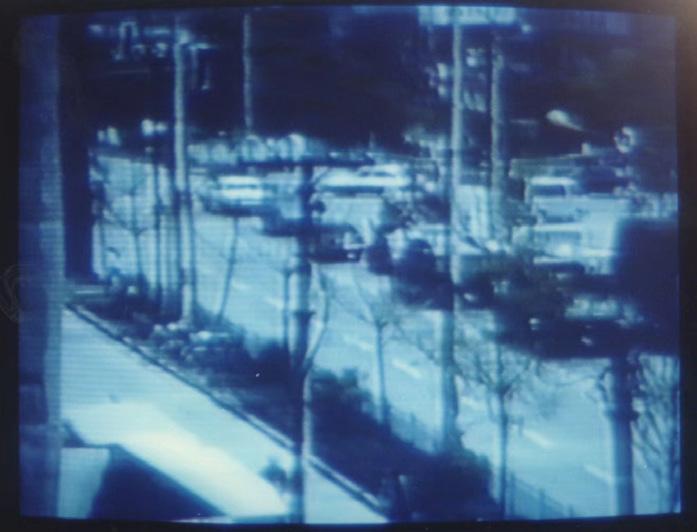
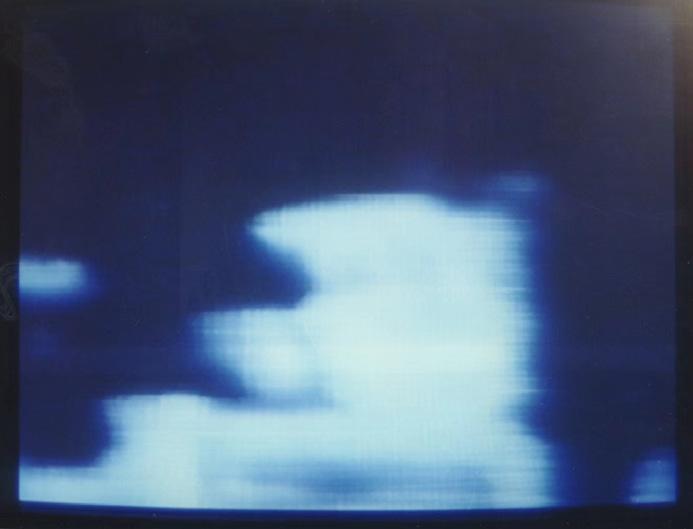


In this arrangement the monitors are reconstructed onto one plinth, compressing the the sequence causing a more restricted view of the abstraction process.



《焦距》是一件 8 视频 8 画面录像装置作品,记录 了一个城市十字路口的景象。艺术家将影像拍摄 下来,再通过“翻拍”电视屏幕中的局部影像以 进行系统化的解构,依此重复,直至影像中的图 像完全模糊。在不同的显示器上同时播放原始和 衍生的图像,造成了线性时间的断裂和均匀重复。 当每个显示屏逐渐趋近于一种美学抽象,这种闭 路电视监控式的屏幕影像与经过仔细检验的清晰 逻辑便发生了背离。按照最初的设计,显示屏被 摆放在 8 个基座上,每个基座之间间隔 80 厘米, 这意味着观众可以在作品之间走动。 Focal Distance is an eight-channel, eightmonitor CRT installation that uses a recording of a city street intersection. The footage is recorded, then systematically deconstructed by re-recording a smaller portion of the screen 焦距,8 视频 8 画面录像装置(显示器),15 分(彩色,有声),循环播放,作品由艺术家提供,1996 Focal Distance, Eight channel, eight screen video installation (monitor) 15’00’’ (colour, sound) looping Courtesy of the artist, 1996
Wang Gongxin
生于 1960,中国,北京 b. 1960, Beijing, China
Born in Beijing in 1960, Wang Gongxin was admitted to the Capital Normal University academy of Fine Arts in 1978, and took the teaching post after graduation in 1982. In 1987, he went to State University of New York as a visiting scholar for master degree studying. He was a visiting tutor at Central Academy of Fine Arts between 2002 and 2007. In 2013, Wang was nominated for XL video Award of Best set design in 2013 “Olivier Award”. In 2014, he received Honorary Doctoral degree in SUNY (State University of New York). He lives and works in Beijing and New York.
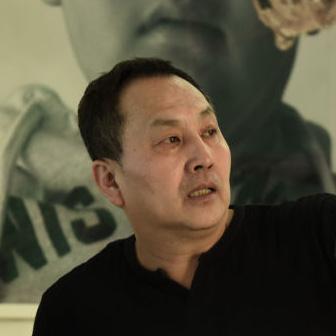
Wang's has exhibited in the San Paulo Biennale, Brasil; Taipei Biennial; Shanghai Biennial; EchigoTsumari Art Triennial in Japan; Tokyo Watari Museum of Contemporary Art; Mori Art Museum in Japan, San Francisco Museum of Modern Art, MOMA PS1 in New York; Victoria and Albert Museum in UK; Queens Museum in New York; Museum for Contemporary Art ZKM in Germany; Haus der Kulturen der Welt in Berlin; Tate Liverpool in UK; National Gallery of Victoria in Australia; the Guggenheim Museum, New York; Hamburger Bahnhof - Museum für Gegenwart in Berlin; White Cube Hong Kong; Fukuoka art Museum in Japan; Institute of Contemporary Arts in London; The Bronx Museum of the Arts, New York; Power Station of Art in Shanghai; OCT Contemporary Art Terminal Shanghai; UCCA Center for Contemporary Art in Beijing and National Art Museum of China.
The Broken Bench (1995-2020) marries traditional Chinese hand-crafted piece of furniture with the culturally non-specific video technology manifest in a bench embedded with a small video monitor. The bench is cut and rejoined to incorporate the video monitor and recording of the repair joinery maintaining the old bench’s ‘original appearance’. Along this join an index finger dispassionately traces the cut line, the record of the interruption, recalling the absent section of the bench in time passed. Pitting contradictory time instances, before and after the monitor was embedded, the bench is resurrected in two distinct mediums and two distinct experiences of time. The demonstration of the past in the video recording makes the present moment more lucid and accentuated, heightening the sense of ‘liveness’. (Text / Kim Machan)
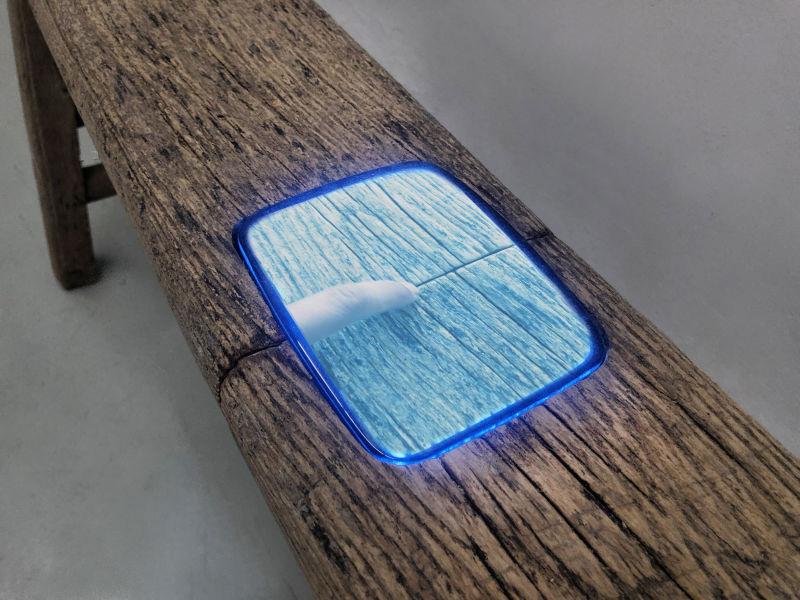
王功新, 1960 年生于北京,1978 年考入首都师范大 学美术学院,1982 年毕业后留校任教。1987 年作为 访问学者赴美国纽约州立大学,进行硕士研究生学习。 2002 至 2007 年在中央美术学院担任客座教授。2013 年获英国伦敦“奥利弗”戏剧金像奖最佳影像设计大 奖提名。2014 年获得纽约州立大学荣誉博士。现生活 创作在北京与纽约。 王功新的作品曾在圣保罗双年展、台北双年展、上 海双年展、日本越后妻有三年展、日本和多利美术 馆、东京森美术馆、旧金山现代美术馆、纽约 MoMA PS1、伦敦 V&A 美术馆、纽约皇后美术馆、德国 ZKM 媒体艺术中心、柏林世界文化宫、英国泰特利物 普美术馆、澳洲 NGV 国家美术馆、古根海姆美术馆、 柏林汉堡火车站国家美术馆、白立方画廊、日本福岗 美术馆、伦敦 ICA 当代艺术中心、纽约布朗美术馆、 上海当代美术馆、OCAT 上海馆、尤伦斯艺术中心与 中国美术馆等展览与美术馆展出。 王功新
作品将中国传统手工制作的家具与文化意义上非 特定的录像技术结合在一个嵌入小显示器的板凳 上。这条板凳被切断,并通过复制了短缺部分的 影像重新连接。沿着板凳断裂处,艺术家的食指 冷静地描摹着板凳断裂的缝隙,记录着中断的存 在,并回忆着缺席的一段板凳在时光中的流逝。 在时间所带来的的矛盾感下——监视器被嵌入之 前和之后,板凳“复活”在两个不同的媒介和两 种不同的时间体验中,由此录像中对错位的过去 的展示使当下更加清晰和突出,增强了在场感。 ( 文 / 金曼 )
王功新,《破的凳》,1995-2022,单通道录像装置,图片由艺术家提供。 Wang Gongxin, The Broken Bench 1995-2022, single-channel video installation, image courtesy of the artist.
作品《两平方有效空间》(1995-2022) 第一次实现
的地点于 1995 年,在北京一个传统胡同,艺术家
的家中。外部的闭路监控摄像机拍摄了两平方米
的房屋外角的传统砖块墙面,部分外墙已磨损和
斑驳。当外角被投影到墙反面的内角时,原本的
外角空间图像“挤入”内角空间结构中。通过影
像媒介的独特可能性,外墙的监控画面被“约束”
在内角中。因直角结构在投影的画面中被消解了,
所以通过闭路监控所捕捉到的空间呈现出了一种
失真感。
作品标题中的“两平方”是一个模棱两可的事
实,唤起我们对所处的真实和虚拟现实的三重调
和——首先,砖块堆砌出现实中的两平方米空间;
其次,监控录像记录了两平方米的外观;最后,
现实中的两平方米被传输及投影到内部空间之中。
由此,两平方米成为一个不确定的命题。不止于此,
闭路监控的延时性打断、扰乱了途经外墙空间的 参与者和内角空角的窥探者对于监控系统的感知, 并激发了新的个人感受。( 文 / 金曼 )
TwoSquareMeterSpace was first fully realised as an installation in the artist’s home in a traditional Hutong in Beijing in 1995. The CCTV camera outside captured the two square meter section of the traditional brick, partially rendered and worn external walls. When this image was projected into the reverse inside section of the wall, the outside perspective was visually forced upon the opposite internal perspective. Through the unique possibility of the video medium, the representation of the exterior wall is disciplined into the internal space. The natural perspective distortion of space is captured through the CCTV camera because the right-angled corner walls recede.

The title “2 Square Meters” is an ambiguous fact that calls for a reconciliation of at least three instances of our lived real and virtual realities. Firstly the concrete measurable reality of two square meters, secondly the video recorded appearance of two square meters, and lastly the reinstated two square meters projected into the internal space. Two square meters becomes an uncertain proposition. In addition, the delay between experiencing the outside wall as a participant and consequently being the voyeur, disrupts, destabilises and brings to attention personal spatial surveillance experiences.
(Text / Kim Machan)
王功新,《两平方有效空间》,1995-2022,闭路电视录像装置,图
片由艺术家提供。
Wang Gongxin, Two Square Meter Space, 1995-2022, CCTV video installation, image courtesy of the artist.
员会成员至今。 鲍蔼伦是香港艺术界的开创性人物。她编织了一种既 引人入胜又突破技术界限的艺术实践,并时刻保持对 社会的反思。此外,在她的日常职业的医疗行为以及 发起、领导文化活动的工作而言,她都为社会做出了 重要贡献。由此,鲍氏通过多种途径和渠道,促使人 们探索自我,以及我们所处的不断更生发展的时代。
生于 1961,中国,香港
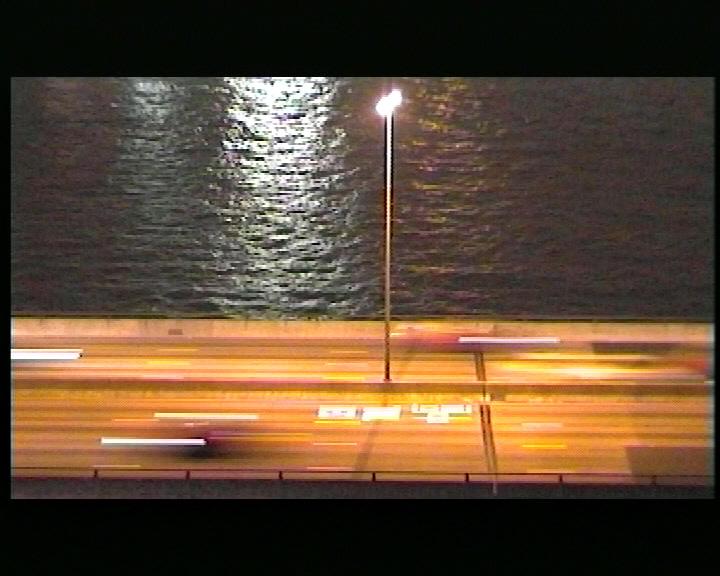
b. 1961, Hong Kong, China 鲍蔼伦,《循环影院(
Born in Hong Kong in 1961, Ellen Pau is a key figure in Hong Kong’s art scene. She raises our awareness of our own physical presence and ignites a contemplation of what it means to be, to exist, here, now, and beyond that, the space each of us occupy.
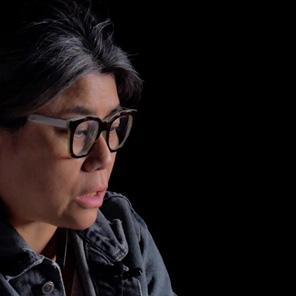
Born in Hong Kong and a graduate from Hong Kong Polytechnic University with a diploma in Diagnostic Radiography in 1985 and received an MA in Visual Culture Studies from the Chinese University of Hong Kong in 2008. Pau has worked as a radiographer in the public hospital in Hong Kong ever since. Pau was plunged into the Hong Kong art scene by her intense interest in video art, new media art, as well as other art forms such as music, poems and performances. Beyond artistic creation, Pau has also been a leader in the promotion, curation and education of art and culture in Hong Kong through founding several important initiatives such as Videotage, the Microwave International New Media Arts Festival and Wikitopia Mini Festival. In 2014, Pau was appointed by the Hong Kong Arts Development Council as a representative of the Art Form Group in Film and Media Arts until end of 2019, and in the same year, she also served on the interim acquisition committee of M+ in West Kowloon Cultural District till present.
Pau is a seminal figure in the Hong Kong art scene, weaving a practice that engages as well as pushes the boundaries of technology, while reflecting on society. Moreover, Pau has been a key contributor to society, through her medical activity as well as initiation and leading of cultural activities. As such, through multiple avenues and outlets, Pau prompts an exploration of the self and the times we are living in, ever shifting and evolving.
鲍蔼伦,1961 年生于香港。作为香港艺术界的翘楚, 鲍蔼伦通过创作让观者意识到个人的物理存在以至其 存在意义,就在当下、这里及我们每个人所占据的空 间以外。鲍氏 1985 年于香港理工大学获得放射诊断专 业文凭,并于 2008 年于香港中文大学攻读视觉文化 研究硕士文凭。随后于香港公立医院担任放射科专业 医护人员。同时,出于对专业工作以外的录像、新媒 体艺术,甚至音乐、诗歌、舞台等艺术形式的强烈兴趣, 她开始涉猎艺术创作。在此之外,鲍蔼伦亦参与成立 包括录映太奇、微波国际新媒体艺术节及维基托邦文 化祭在内的多个重要文化机构,致力于香港艺术及文 化上的推广、策展、教育工作。鲍氏更于 2014 年同 时开始担任香港艺术发展局电影及媒体艺术组主席至 2019 年年底,以及西九龙文化区 M+ 博物馆的购藏委
鲍蔼伦
Ellen Pau
)》,2000,单通道录像装置,图片由艺术家和马凌画廊提供。
Viewing Room
Ellen Pau, RecyclingCinema(ViewingRoom),
2000,
single-channel video installation, image courtesy of the artist and Edouard Malingue Gallery.
Ellen Pau
Photo by Martin Cheung ©Ellen Pau and Edouard Malingue Gallery
图片由
Martin Cheung 拍摄,
由艺术家及马凌画廊提供
在全球公共建筑中都很常见的闭路电视监视屏, 观察着无剧本的公众互动,客观地记录了这个一 成不变的环境中的任何变化。《循环影院(Viewing Room)》利用摄影机的平移运镜,跟踪驶过桥梁 的车辆,直到镜头锁定从另一侧进入画面的下一 辆车辆,从而连续跟踪了一连串的穿梭的匿名车 辆。当规则出现,结构也就相应显现。投影机前 的两张扶手椅为观众提供了一个固定的位置,作 为装置的一部分,令我们联想到在最初拍摄中摄
Ellen Pau’s work is preoccupied with the everyday, focusing on present and accessible real-life phenomena to extract the pulse and tone of our contemporary human condition. In keeping with the transnational character of the video medium, the two works in this exhibition OperationTheatre(1995)and RecyclingCinema(ViewingRoom) (2000) could have been recorded in any city of the world. The backdrop of modern architecture, cityscape, bridges and cars are common globally while the Asian ethnicity of the figures in OperationTheatre could also be found in any number of locations in the East and West. Each work seeks out an everyday concrete experience such as contemplating a hospital and the people moving through it, or pondering traffic flows and the transit of drivers and passengers. Drawing attention to a distilled experience of mainstream cultural concepts, in this case theatre and cinema, the two works subvert the expectation of theatrical and cinematic conventions. This is achieved through the exploration of medium of video that enabled the artist to access, record, consider, deconstruct and reinstate these everyday situations. In OperationTheatre, a single camera point-of-view CCTV footage capturing people moving through a busy hospital corridor is the source material for the work. The CCTV monitoring, commonplace in public buildings globally, observes unscripted public interactions objectively recording any change in an unchanging setting. Recycling Cinema uses the horizontal pan of the video camera to track a vehicle crossing a bridge before the camera locks onto the next vehicle entering the frame from the opposing side, consequently tracking serial anonymous crossings. The rule emerges and structure is mechanically followed. Two arm chairs in front of the projection offer a committed position for the viewer as part of the installation and what we could imagine as the roost from where the video was originally filmed. (Text/ Kim Machan)
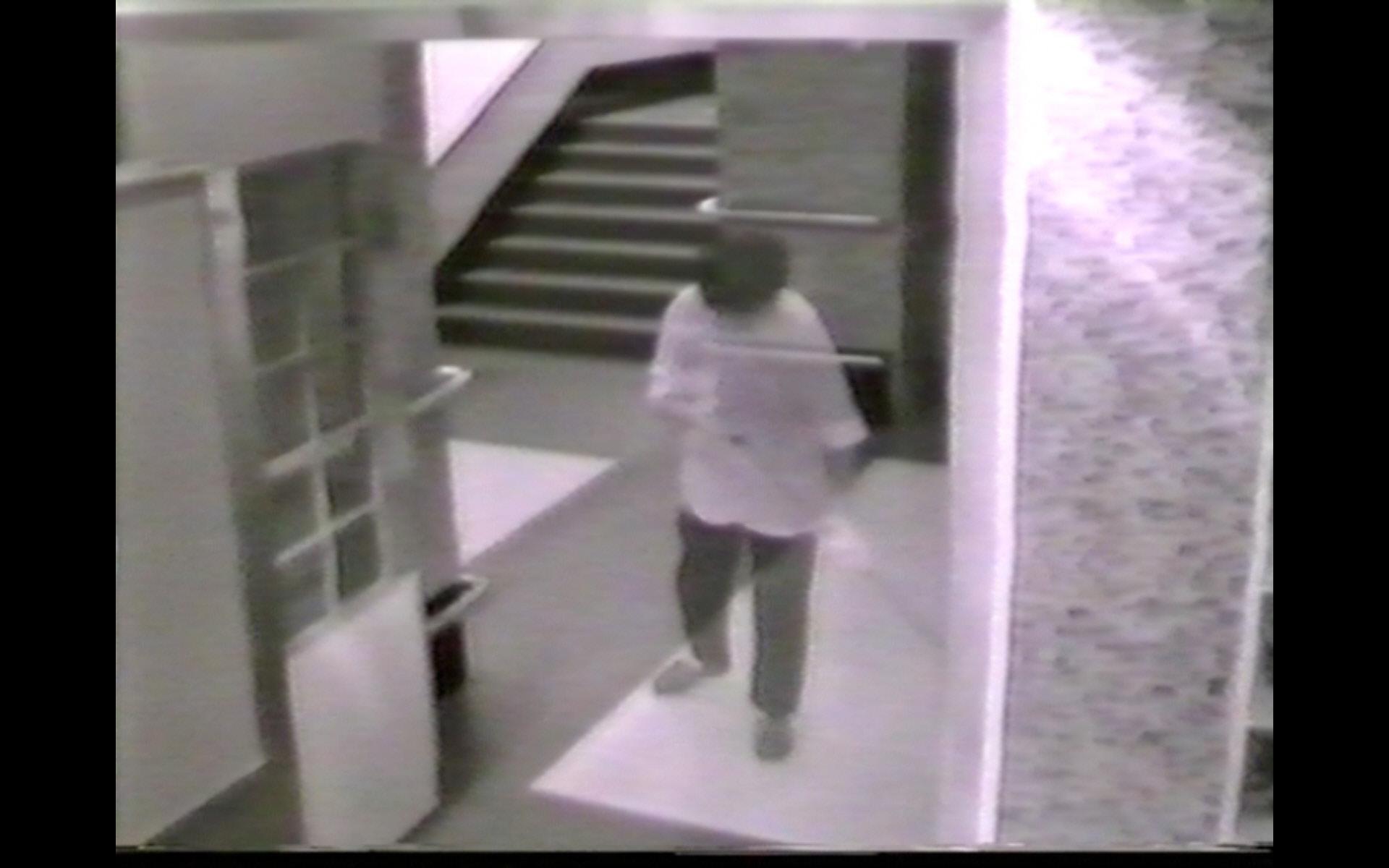
鲍蔼伦的作品聚焦于日常,通过对当下和可触及 的现实生活现象的关注,洞察出当代人类生存处 境的脉搏和基调。此次展出的两件作品《行动剧 场》(1995)和《循环影院(Viewing Room)》 (2000)可以是在世界任何一个城市被拍摄出来, 因此都体现了录像媒介的跨国界性。影片以现代 建筑、城市景观、桥梁和汽车这些在全球范围内 都很常见事物为背景,而《行动剧场》中的亚洲 人形象也可以在东西方世界的任何一个地方找到。 每件作品都在寻找一种具体的日常体验,例如凝 视一间医院和其中走动的人们,或者是观察川流 不息的车流以及司机、乘客的穿行。这两部作品 聚焦于对主流文化观念的提炼体验,分别以剧场 和电影院为主体,颠覆了人们对戏剧和电影传统 的期待。借由录像媒介,艺术家得以触及、记录、 思考、解构和还原这些日常情境。在《行动剧场》中, 由闭路电视摄像机捕捉的人们在繁忙的医院走廊 中活动的单视点画面,构成了作品的原始素材。
影机的位置。(文
金曼) 鲍蔼伦,《行动剧场》,1995-1996,单通道录像,图片由艺术家和马凌画廊提供。 Ellen Pau, Operation Theatre, 1995-1996, single-channel video, image courtesy of the artist and Edouard Malingue Gallery.
/
Chen Shaoxiong

1962-2016,中国,汕头
1962-2016, Shantou, China
Born in Shantou, Guangdong province in 1962, Chen Shaoxiong was educated in the printmaking department of the Guangzhou Fine Art Academy, is a founding member of the Big Tail Elephant Collective, one of the most important artistic collectives in Chinese contemporary art history.
The artist’s conceptual work employs a variety of media, including photography, video, installation and ink painting, to investigate the dynamics of China’s rapidly changing cityscapes. Often set against the background of an imaginative or imaginary skyline, the artist records the hectic pace and absurdity of everyday existence: fragments from family life, political issues, rumors from the entertainment industry, restaurants, nightlife, and prostitution.
Chen Shaoxiong begins with the directness of media such as traditional ink painting and transforms it into technical media such as video; it is a combination of this and the uncomplicated manner in which the everyday confront more extraordinary issues of modern life that gives the work added import. Thematically, his work often deals with the rapidly urbanizing and constantly changing environments of his home province in southern China, the nature of the crowd, the dominance of the image, the aesthetics of globalization, and public or collective memory.
SightAdjuster3 (1996), adopts two visual channels to separate the viewer's vision into two objects (televisions). The content of these two TV screens are both related and paradoxical, they are ‘connected’ at times, and ‘separate’, or even be in conflicting positions with each other. The information received to both eyes force the brain to process these images together in order to find establish their logical relationships. In the course of processing these information, the eyes and the brain experienced the trouble of "looking", by which the artwork achieves to "adjust the sight" of the viewers. The design of this installation is tailored to the physiological requirements of medical equipment, its height and distant are both fitted to contain a person receiving ‘sight-adjustments’. The artist wishes to improve one's adjustability to the constantly changing and complex social environment through ‘sight-adjustments’.

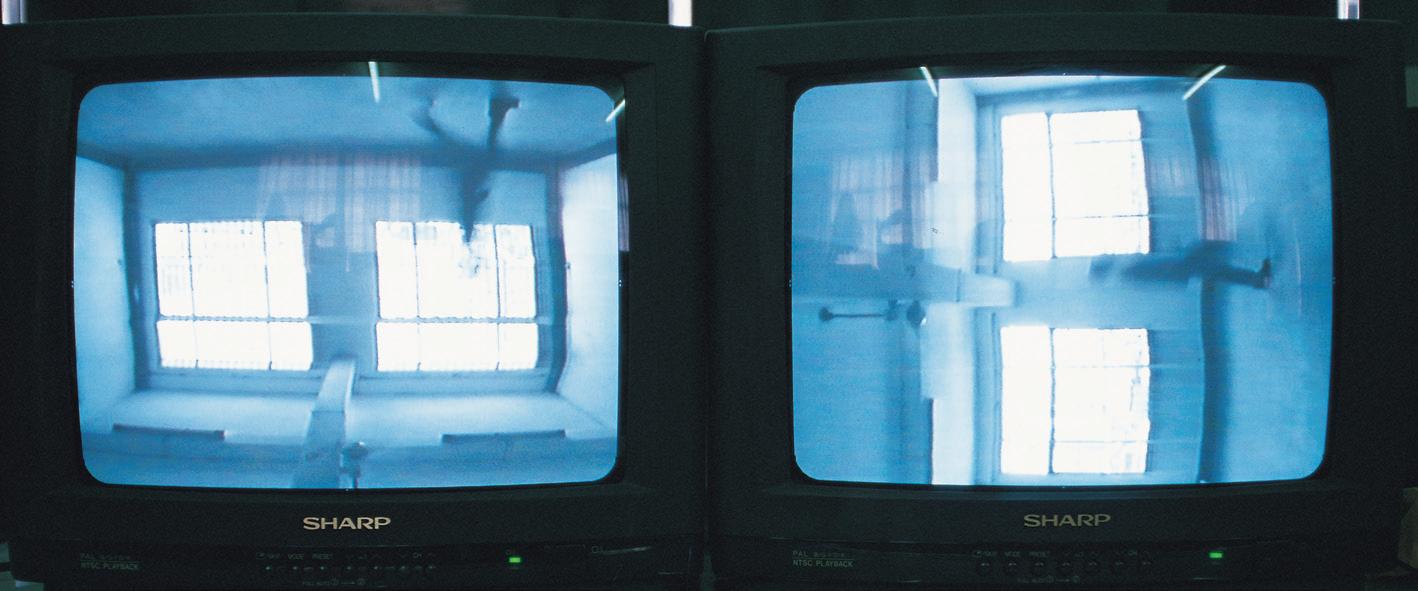
陈劭雄,1962 年生于广东汕头,毕业于广州美术学院 版画系。他是中国当代艺术史上最重要的艺术团体“大 尾象”的成员之一。 陈劭雄的观念艺术运用了多种艺术媒介,包括摄影、 录像、装置及水墨绘画,以此来研究中国日新月异的 城市风景。通过想象的或是虚构的背景,艺术家记录 了现实存在的城市的狂躁节奏和荒谬现实:家庭的生 活片断、社会政治的敏感话题、来自娱乐业的传闻、 夜生活,甚至非法性交易等事件都是艺术家所关注的 题材。 陈劭雄先是使用传统的艺术媒介——水墨进行绘画, 进而将它转化为影像这样的技术媒介。在当代生活中, 我们每天都会面对越来越多特殊的问题,于是,这样 的一个混合体:简单的风格加上如上的技巧,使作品 变得重要。陈劭雄的作品通常审视的是他的家乡——
中国南方迅猛的城市化进程与其不断变化的环境,人 的状态,图像的统治力,全球化的美学,以及公共或 集体记忆。 陈劭雄
《视力矫正器 3 》 (1996) 是由两个视觉通道将观 看者的双眼分开引向两个观看对象(电视),这 两个屏幕图像的内容既相关又相悖,它们有时处 于“连接”状态,有时又“断开”了彼此的关联, 甚至出现相互矛盾的并置,而两眼由于各自获取 不同信息,迫使大脑努力去拼合这些图像以寻找
械的生理学要求,它的高度和距离都恰好容纳一
适应不断变化、日益复杂的社会环境的能力。
它们之间的逻辑关系。眼与脑在处理这些信息中 经历了“看”的困境,作品也就实现了对观看者 的“视力矫正”。该装置的设计力求符合医疗器
个接受视力矫正的人。希望通过矫正视力以提高
陈劭雄,《视力矫正器 3》,1996,双通道录像装置,作品由陈思 羽及 SPURS Gallery 提供
Chen Shaoxiong, Sight Adjuster 3, 1996, dual-channel video installation, Courtesy of the Chen Siyu and SPURS Gallery
的金属框架及其顶端的电视机对新娘身体进行了
一次建构。作品中的电视机被自然而然地看作为
这具新娘身体中的头部。通过对实时电视频道的
画面切换,作品激发了电视画面和具有象征意味
的新娘形象之间的动态互动。除了涉及官方电视
频道下实时转播所连带的社会、政治语义,及新
娘形象所潜藏的象征隐喻,艺术家对录像这种媒
介的处理方式也是一次对不断变化的当下的提议
和思考。(文 / 金曼)
The installation assembles the figure of a bride through a wedding dress suspended on a clothes hanger underneath a metal framework that is topped with a television set. The television is consequently interpreted as the head of the bridal dress body. By employing the real time content of any broadcast television programming on this monitor, the work ignites a dynamic interaction between the TV content and the symbolic persona of the bride. Putting aside the social and political content that streams through the real-time official broadcasts and the highly symbolic metaphor of the bride, the artist’s approach to the medium of video has constructed an everchanging-real-time proposal to consider. (Text/ Kim Machan)

这件装置作品通过一件婚纱礼裙、一个支撑裙子
陈劭雄,《改变电视频道便改变新娘的决定》,1994,共用天线电 视录像装置,作品由陈思羽及 SPURS Gallery 提供 Chen Shaoxiong, Change the TV Channel,
Change the Bride's Decision 1994, CATV video installation, Courtesy of the Chen Siyu and SPURS Gallery
Geng Jianyi
1962-2017,中国,郑州
1962-2017, Zhengzhou, China
Born in Zhengzhou, Henan province in 1962, passed away in 2017, Geng Jianyi graduated from the Department of Oil Painting in Zhejiang Academy of Fine Arts (today named as China Academy of Art, Hangzhou). The work of the artist Geng Jianyi is characterized by an uncompromising resistance to any categorical form of representation. Since the mid 1980s, when he first came to prominence within China as a seminal member of the ‘avantgarde’ movement known as the ‘85 New Wave’, Geng has sought to foment this resistance through the use of a wide range of techniques-including various forms of painterly transcription, staining, frottage, photographic and filmic transfer, chemical transformation and textual juxtaposition whose conspicuously disjunctive effects constantly undermine any attempt to arrive at definitive meaning. To date, Geng’s work has been exhibited in over 140 exhibitions in China and abroad, mainly including the China/Avant-gardeArt Exhibition, National Art Museum of China, 1989; China Avant-garde touring exhibition to venues including Haus der Kulturen der Welt in Berlin, the Kunsthall Rotterdam, Museum of Modern Art, Oxford in 1993; Cardinal Points of the Arts, the 45th Venice Biennale, 1993; the Cities on the Move exhibition series (1, 2, 3, 4&5) in museums in Vienna, Bordeaux, New York, Copenhagen and London, 1997-1999; Global Conceptualism: Points of Origin, 1950s-1980s, Queens Museum of Art, New York, 1999; Reinterpretation: A Decade of ExperimentalChineseArt(1990-2000), the First Guangzhou Trienniale, Guangdong Museum of Art, Guangzhou, 2002; The Real Thing, Contemporary Art from China, Tate, Liverpool, 2007; Moving Image in China: 1988-2011, Minsheng Art Museum, Shanghai, 2011; Gwangju Biennale, Gwangju, Korea, 2014; Stubborn Image, OCAT Shanghai, 2016; Viva Arte Viva, the 57th Venice Biennale 2017; and the Solomon R. Guggenheim’s survey Art and China After 1989: Theater of the World, 2017-2018.

Dimension of Vision (1996), as a three-channel CRT monitor installation was exhibited in PhenomenonandImage, in Hangzhou in 1996 - considered to be the first video art exhibition organized in China. The work is dominated by a repeated singular image, the eye of a duck anchored in the center in the screen. The single spare image shifts sequentially to each screen while the other two monitors cut to show black void. The only movement in the image is that of the drowsy eyelid lowering and jerking open. The close-up video recording of the duck’s eye produces its own black void in the expanded pupil. The work exploits the portability and intimacy of the recording equipment allowing the artist to record the mesmerizing situation. The extended exposure to the central black void of the duck’s eye creates an apprehensive tension between recognizing a captured or disabled animal, the recognition of the eye as belonging to a consciousness being, and the sensation of an overwhelming sublime within the central black void of the duck’s eye. Because of the dominant black content within the work, the monitor’s reflective glass surface acts a mirror implicating the viewer through their own and others reflection. (Text / Kim Machan)

耿建翌, 1962 年生于河南郑州, 2017 年去世。 1985 年毕业于浙江美术学院(即今中国美术学院) 油画专业。艺术家耿建翌的工作特征在于对各类表 现形式进行毫不妥协的抵抗。作为被称作“八五新潮” 的前卫艺术运动中颇有影响的一员,耿建翌从 1980 年代中期在中国声名鹊起。从那时起,他就开始试 图广泛运用各种技术来助长这种抵抗——包括各种 形式的绘画性转译、着色、拓印、摄影、和影片式 转换,化学变化和文本并置——这些显著的隔离效 应使得达至确切意义的努力被不断削弱。耿建翌的 作品曾在中国和国际上的 140 多个展览中展出,主 要有“中国现代艺术展”,中国美术馆,北京( 1989 ); “中国前卫艺术展”,柏林世界文化宫,鹿特丹美术馆, 牛津现代艺术博物馆( 1993 );第 45 届威尼斯国际 艺术双年展( 1993 );“移动中的城市”系列展览 ( 1 、 2 、 3 、 4&5 ),维也纳、波尔多、纽约、哥本 哈根和伦敦( 1997 1999 );“ 1950 1980 年代 全球观念主义艺术展”,皇后区艺术博物馆,纽约 ( 1999 );首届广州三年展“重新解读:中国实验 艺术十年( 1990 2000 )”,广东美术馆( 2002 ); “真实的东西,来自中国的当代艺术”,泰特美术馆, 利物浦(
上海民生现代美术馆(
(
1989 年之后的艺术与中国:世界 剧场”,纽约( 2017 2018 )。 耿建翌
2007 );“中国影像艺术 1988 2011 ”,
2011 );光州双年展,韩国
2014 );“投影顽固”,OCAT 上海馆,中国( 2016 ); 第 57 届威尼斯国际艺术双年展( 2017 )以及古根海 姆博物馆的展览“
三通道监视器装置《视觉的方向》(1996) 曾于 1996 年在中国美术学院的“现象 • 影像 : 中国录 像艺术展”中展出(该展览被普遍视为中国首个 录像艺术的专题展览)。这件作品由单一重复画 面所主导,屏幕中心是鸭子一只眼睛的特写。该 单一画面依次移至每个屏幕中播放,与此同时其 他两个监视器画面则转而呈现为黑屏状态。图像 中唯一运动着的是昏昏欲睡的鸭子缓慢开合和不 时抽搐的眼睑。在特写镜头的记录中,鸭子扩散 的黑色瞳孔生成了新的黑色空间。得益于录像设 备的便携和随身性,艺术家记录下这充满吸引力 的画面。长时间凝视鸭子瞳孔中央的黑洞会产生 出一种让人忧虑的紧张感,这种张力来源于对捕 获动物,或是对伤残动物的辨认,承认到这双眼 睛背后的存在着的意识性以及这一切背后压倒性 的崇高感。正因为黑色在该作品中占据着主导性 地位,监视器的反光玻璃表面可被视作一面镜子, 观者从中可以看到自己和他人的映像。( 文 / 金曼 )
耿建翌,《视觉的方向》,1996,三通道录像,私人收藏,星美术馆惠允 Geng Jianyi, Dimension of Vision, 1996, three-channel video, Private collection, courtesy Start Museum
生于 1963,中国,北京
b. 1963, Beijing, China 《与环境有关》
Born in Beijing in 1963, Zhu Jia graduated from China Central Academy of Fine Arts in 1988 and now lives and works in Beijing and London. He is a pioneer of video art in China developing his first works in Beijing in 1991. Zhu Jia explored the medium of video using it as a tool to consider familiar interior and exterior spaces in unfamiliar ways. His early works engaged with intimate interior domestic spaces such as the inside of a wardrobe, a refrigerator, and small rooms. He sees the ordinary in extraordinary ways, for example, attaching a camera to a tricycle wheel and riding through the streets of Beijing. Originally trained in oil painting, video became part of the artist’s expanded practice that has employed spatial approaches to projection and installation. Zhu Jia has been included in exhibitions in China and internationally including Art and China after 1989: Theater of the World, Solomon R. Guggenheim Museum, New York in 2017 and Bilbao, Spain in 2018; LANDSEASKY: revisiting spatiality in video art, OCAT Shanghai, 2014; Shanghai Biennale, Shanghai Art Museum, 2008; the Venice Biennale, Italy, and Alors la Chine?, Centre Pompidou, Paris, France in 2003; Tempo, The Museum of Modern Art (MOMA), New York, 2002; the Biennale of Sydney, Australia, 1998; and the Cities on the Move series of five unique exhibitions in 1997 and 1999 that were situated in museums in Vienna, Bordeaux, New York, Copenhagen and London.

Jia, Related to Environment, 1997, single-channel video, image courtesy of the artist and ShanghART Gallery.
Related to Environment
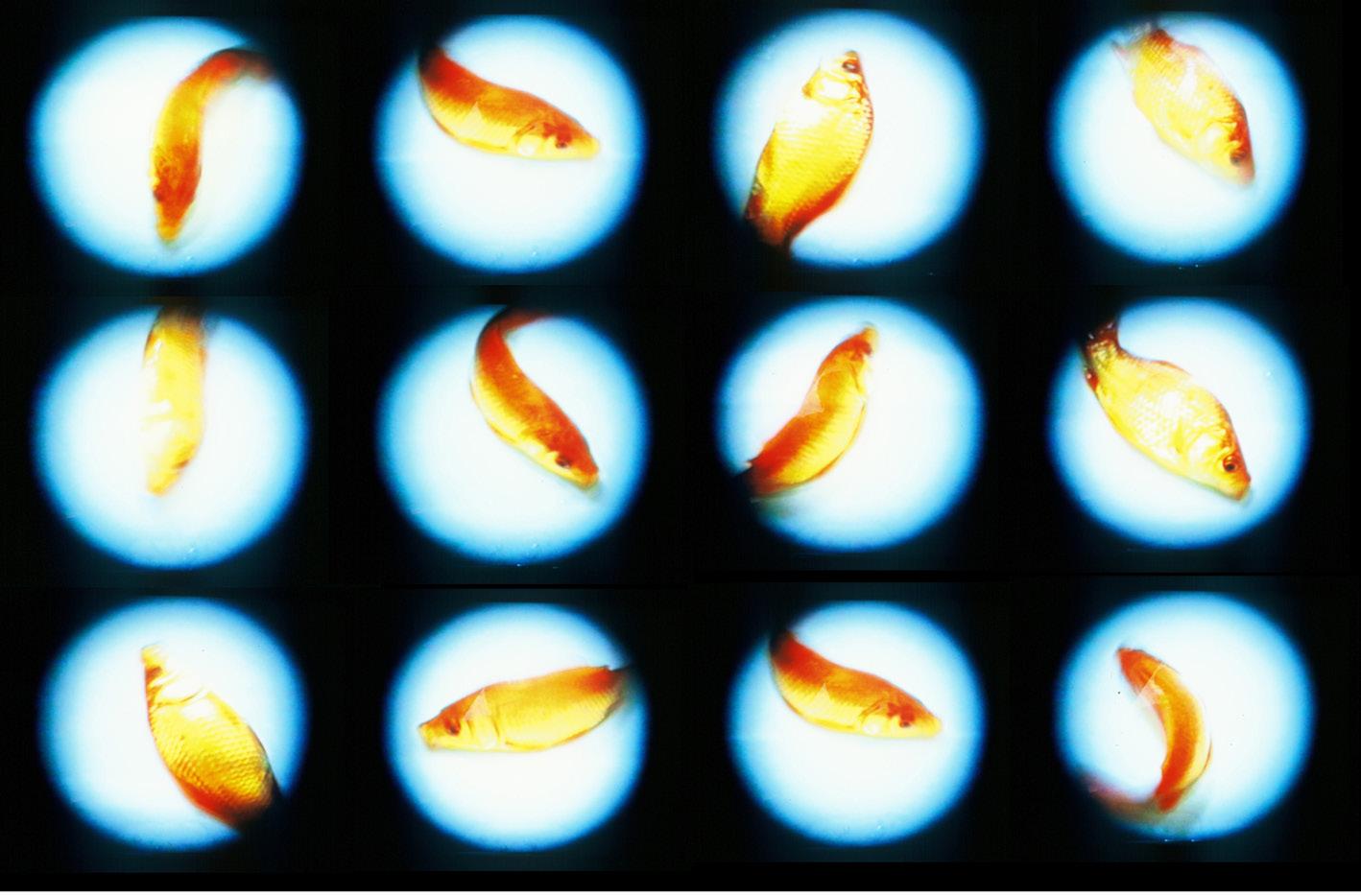
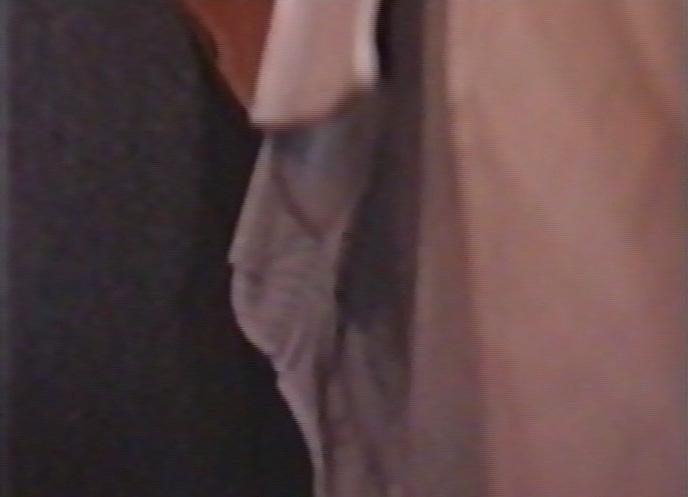
video imagery captures a goldfish, jumping, breathing, flipping and struggling out of water. The video is edited without a beginning or end, pointing to the cyclical nature of life.
Armoire
replaces the hand
1992, single-channel video, image courtesy of the artist and ShanghART Gallery.
朱加,1963 年生于北京,1988 年毕业于中央美术学 院油画系第三工作室。现生活工作于北京和伦敦。作 为中国当代最早的一批录像艺术实验者之一,他从 1991 年在北京开始创作。朱加探索录像媒介的方式 是,把它作为一种用非常态的方法来思考常态的内外 空间的工具。他早期的作品处理诸如大衣柜、冰箱和 小房间等私密的家庭空间。他以超常规的式观看日常 事物,例如将摄像机固定在三轮车条幅上并在北京街 头骑行。艺术家最初接受的是油画训练,录像成为他 扩展实践的一部分,将空间方法使用到投影和装置中。 朱加参加的中国和国际展览包括:1989 年之后的艺术 与中国:世界剧场,古根海姆博物馆,美国纽约(2017) 和西班牙毕尔巴鄂(2018);海陆空:重访录像艺术 的空间性,OCAT 上海馆 , 中国(2014);上海双年 展,上海美术馆,中国(2008);威尼斯国际艺术 双年展,意大利(2003)和中国怎么样?(Alors la Chine?),蓬皮杜艺术中心,法国巴黎(2003);节 奏,现代艺术博物馆,美国纽约(2002);悉尼双年 展,澳大利亚(1998);以及“移动中的城市”系列 展览,维也纳、波尔多、纽约、哥本哈根和伦敦(
朱加
1997 1999)。
Zhu Jia
看上去似乎这本身就是金鱼的正常生存状态。同期声
镜头是从盘子的正上方垂直向下拍摄的,影像清晰的 记录了一条金鱼在没有水的盘子里跳跃、呼吸、挣扎, 这个过程被编辑成没有开始也没有结束的循环往复。
的存在增加了这个环境的有效性。
朱加,《大衣柜》,1992,单通道录像,图片由艺术家和香格纳画 廊提供。 Zhu Jia, Armoire,
《大衣柜》 摄影机的镜头取代了一只手和眼睛的位置在一个衣柜 里翻来找去的动作,摄影机纪录了镜头与衣橱里的衣 服直接的接触过程,强调了主观视觉存在的可能性。
A camera lens
and eyes as it moves inside a wardrobe. The camera records the direct contact between the lens and clothes in the wardrobe, emphasizing the body of the camera as not merely recording device but as capable of creating sensorial and visual contact.
朱加,《与环境有关》,1997,单通道录像,图片由艺术家和香格纳画廊提供。
The
Zhu
RepeatonPurpose
Forever
A high-8 video camera was
to the left wheel of a tricycle on a self-made bracket. The lens oriented outward recorded city scenes as the artist rode the tricycle through Beijing streets, cycling naturally and adjusting speed according to traffic conditions. The video imagery documented city scenes while simultaneously recording the movement of the tricycle wheel.


high-8 video camera is placed inside a refrigerator with the lens pointing outwards. As if in a state of auto-recording or surveillance, the camera records a series of casual actions of an item being placed into or removed from the refrigerator. When the refrigerator is open (and the light inside illuminated), the camera records an image. When the refrigerator door is closed, the screen appears black. The video imagery is subjected to the physical attributes of the inside chamber of the refrigerator with alternating conditions of light and dark. The removal of the audio emphasizes the inherent subjectivity in the image.

《刻意的重复》 将一台超级 8 毫米摄影机放置在冰箱最里端的角落 里,镜头朝向冰箱门,开启摄录键,将摄影机处 在自动录影的状态下,关上冰箱门。再打开冰箱门, 随意的拿取一件东西;关上冰箱门。再次打开冰 箱门随意的放置一件东西;关上冰箱门。反反复 复重复这组动作。冰箱门打开时冰箱的照明灯被 开启,录影机自动记录下有光照状态下的影像, 冰箱门关闭时,录影机则记录下没有图像的图像。 作品既是在这两种交替的状态下将时间延续着。 将声音部分主动的去除,是强调图像本身存在的 主观性。
A
朱加,《刻意的重复》,1997,单通道录像,图片由艺术家和香格纳画廊提供。 Zhu Jia, Repeat on Purpose, 1997, single-channel video, image courtesy of the artist and ShanghART Gallery. 朱加,《永远》,1994,单通道录像装置,图片由艺术家和香格纳 画廊提供。 Zhu Jia, Forever, 1994, single-channel video installation, image courtesy of the artist and ShanghART Gallery. 《永远》 将一台超级 8 毫米摄影机用自制的托架固定在一架 三轮车左侧轮子的辐条上,摄影机的镜头朝外, 开启摄录键,然后骑行三轮车走在北京的街道 上,骑行的路线并没有特殊的选择,骑行的速 度和方式基本遵照街道上的自然状态,摄影机 随着三轮车的移动以及车轮的转动,记录下这 一行动的轨迹。
fixed
1963,中国,北京 b. 1963, Beijing, China
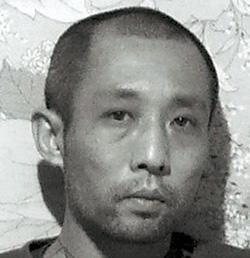
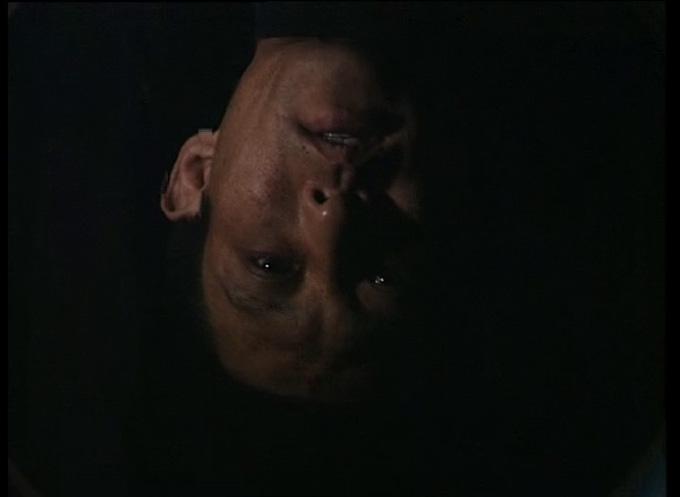
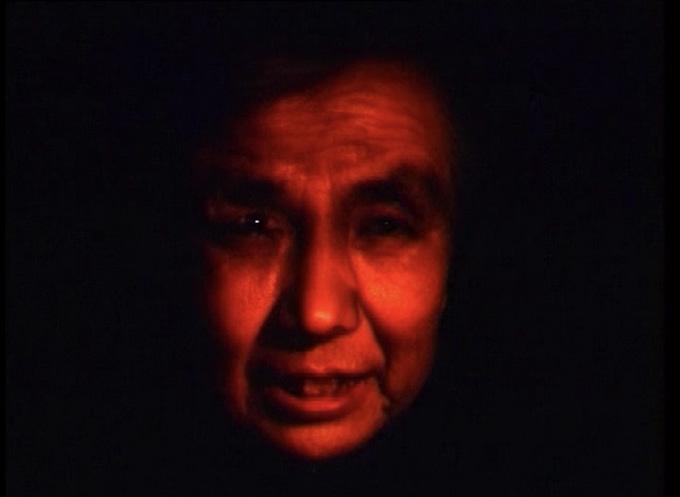

Born in 1963 in Beijing, Li Yongbin began his career in Video Art field in 1995. He insists observing the pass of the time from a third-person perspective. In face of life changes, he can always remain placid and keep his own belief —— waiting. Through his unique visual language, in which fuzziness and lucidness coexist with each other, audiences can easily capture a series of contradictory spiritual characteristics that are hidden under the surface: flow and stillness, waiting and giveup, negativeness and sadness. Li Yongbin believes that art is a way of waiting, while the truth can only emerge in waiting.
Selected exhibitions include: Alors la Chine?, Centre National d’Art et de Culture Georges Pompidou, Paris (2003); Compounds Eyes, Earl Lu Gallery, Lasalle-Sia College of the Arts, Singapour (2001); Cross Pressures, Oulu Art Museum and Finnish, Museum of Photography, Finlande (2001); Clues of the Future, Red Tate Gallery, Pékin (2001); It’s me, DDM Warehouse, Shanghai (2001); L’œuvre VidéographiquedeLiYongbin, Palais des BeauxArts de Bruxelles, Belgique (2000); Supermarché, Shanghai (1999); Sign of Life, Biennale de Melbourne, Melbourne (1999); Beyond the Future, Third Asia-Pacific Triennal of Contemporary Art, Queensland Art gallery, Brisbane (1999).
“What I do is to specify what is in my mind as fast as I can. It has to be quick because I want to keep my inspiration pure and unpolluted. And that means the color, sound, smell, taste and touch. When using materials, equipment or technology, I try to keep technical attributes to a minimum. For instance, cameras can be used in a simple way. The simplicity helps me achieve what I want in a timely and pure fashion. It can help me avoid being disturbed from outside, thus I can assure the continuity of every piece of work, which means every work is a sequel of last one. What I experience most is it has a beginning but never an ending.The point of doing this is I can possess the pleasure of getting rid of certain burdens. The enjoyment is like weight-loss: the key lies in reducing and getting rid of, until there is nothing to lose,and then all returns to peace.” Li Yongbin.
李永斌自 1995 年开始影像创作,他始终用第三只眼平 静地凝视时间的流逝,在不变的等待中静观人生的反 复和异变。透过模糊与清晰并存的视觉化语言,观众 可以很容易地捕捉到表象之下一系列矛盾且纠结的精 神特质:流动与静止、等待与放弃、消极与悲凉。在 李永斌看来,只有在等待中,真正的意义才可能产生, 而艺术正好给人提供了一个等待的方式。 李永斌曾多次参加重要的国际摄影和录像艺术展。包 括 : 中国怎么样?巴黎蓬皮杜艺术中心,巴黎(2003); 附眼,新加坡拉赛尔艺术学院画廊,新加坡(2001); 矛盾中的北京,芬兰奥录美术馆 / 赫尔辛基摄影美术 馆,赫尔辛基(2001);迹象未来,北京红门画廊, 北京(2001);这是我,东大明创库画廊,上海(2001); 李永斌的录像作品,Palais des Beaux-arts,布鲁塞 尔(2000);超市,上海(1999);生活的痕迹, 墨尔本双年展,墨尔本(1999);超越未来 - 亚太地 区三年展,亚昆士兰美术馆,亚昆士(
李永斌
1999)。
Li Yongbin
生于
“我做作品就是尽快地将脑子里的东西人觉化。 所谓“尽快地”是为了赶在那天赐直觉被污染之 前?所谓“人觉化”是色声香味触法?并在使用 某种材料,某种设备或某种技术的过程中,将其 技术属性降低到最低限度;例如摄像机就可以如 此简单使用。正是这种简单和便于操作的属性可 以让我非常及时,非常新鲜的进入一种要完成什 么的状态。这样做不仅可以有效的避免一些来自 外界的干扰,从而也保证了每件作品的连续性,即: 每件作品都是同一事物的又一次延续。其中我的 最大体会是;这“同一事物的又一次延续”是一 个有始无终的东西,从事这种工作的意义在于; 每完成一件作品都能使我产生摆脱某种东西的快 感。一种摆脱后的喜悦。它有些类似减肥运动, 目的在于减。减而再减,直至减到什么都没有的 非人境界。”(李永斌)
脸 2 Face-2 脸 3 Face-3 单通道录像(显示器) 35 分 45 秒(彩色,无声) 私人收藏,星美术馆惠允 单通道录像(显示器) 7 分 6 秒(彩色,无声) 私人收藏,星美术馆惠允 脸 1 Face-1 1994-1995 1996 1997 单通道录像(显示器) 35 分 56 秒(彩色,无声) 私人收藏,星美术馆惠允 Single-channel video (monitor) 35’56’’ (colour, silent) Private collection, courtesy Start Museum Single-channel video (monitor) 35’45’’ (colour, silent) Private collection, courtesy Start Museum Single-channel video (monitor) 7’06’’ (colour, silent) Private collection, courtesy Start Museum 脸 1 / Face-1 脸 2 / Face-2 脸 3 / Face-3
绕着“战争的日常化”与“日常的战争”为主轴,呈 现当代的生存状态及不安。
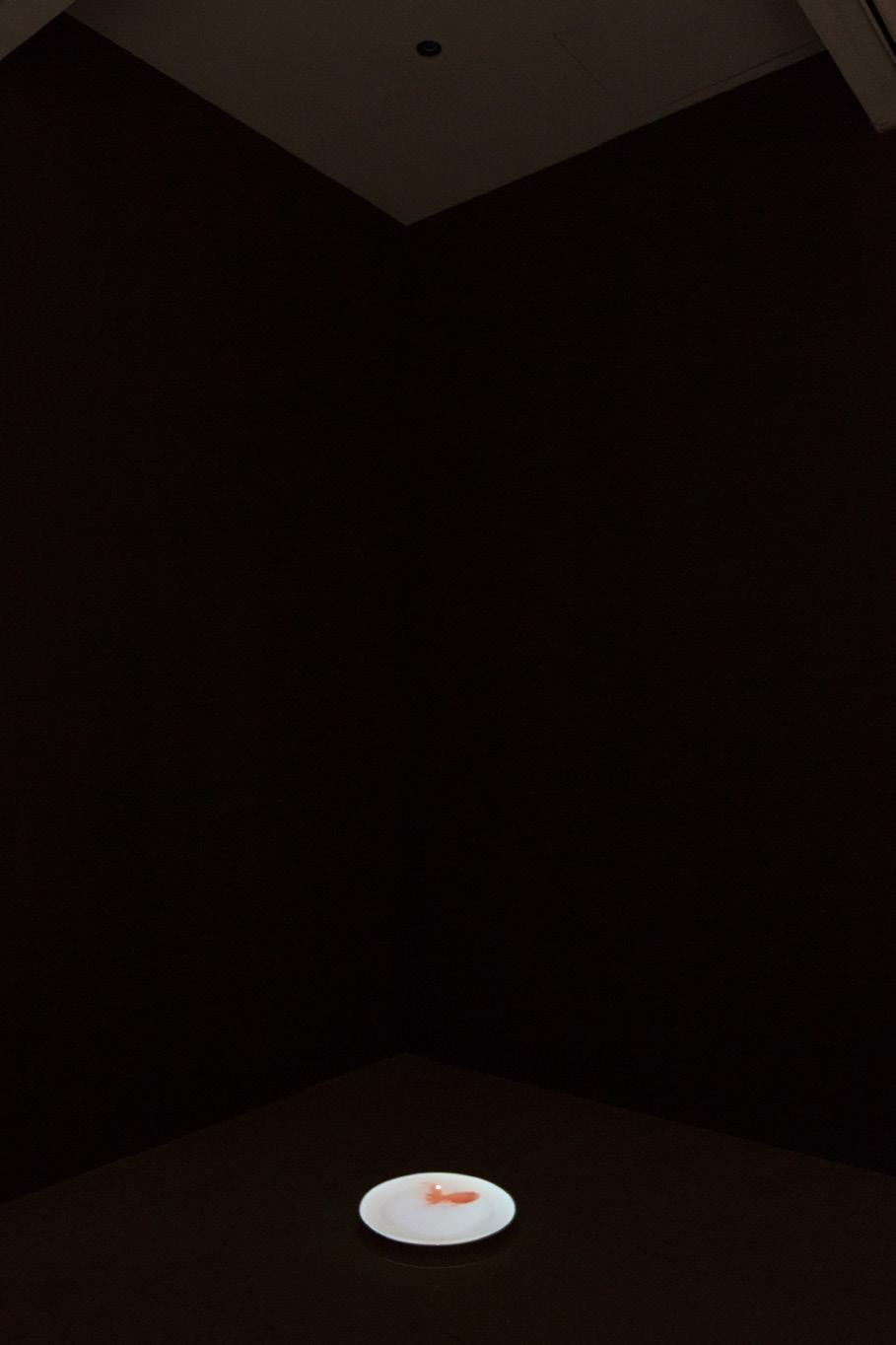
Yuan Goang-Ming
Born in Taipei, Taiwan in 1965, Yuan Goang-Ming obtained a master’s degree in media art from the Academy of Design in Karlsruhe, Germany, and now teaches as a professor at the Department of New Media Art of Taipei National University of Arts. He is considered one of the most active and internationally acclaimed Taiwanese media artists.


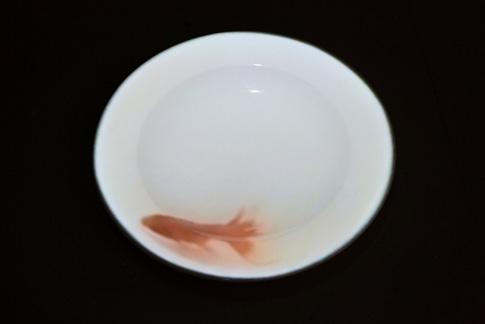
Yuan began making video art in 1984. Combining symbolic metaphors with technological media, his work expresses the state of contemporary existence, and explores the human mind and consciousness with the use of poetic expressions. He was awarded First Prize for the Taipei County Arts Award, and his City Disqualified created in 2002 further solidified his unwavering position in the history of Taiwanese contemporary media art.
In 2007 Yuan began to use elements derived from ‘everyday domesticity’ and ‘ruins’ to develop fascinating ‘theatricaleverydayness’ in his work. After 2011, he began exploring diverse formats, creating large-scale creations based on the themes of ‘time and memory’ and ‘body and perception’. His 2014 solo exhibition, An Uncanny Tomorrow, extended from the subject of ‘home’ and explored regional living conditions under the current phenomenon of globalization, with art used to reflect on modern people’s conundrums and worries. His solo exhibition, Tomorrowland, presented in 2018 showed the concept of ‘home’ will no longer be a stable concept in the future. The presented artworks focused on the theme of ‘war in everyday’, or ‘everyday during war’, with the living conditions and the unrest in today’s world shown.

video installation exhibited at Yuan's first solo exhibition, Fish on Dish (1992) was the artist's first work conjoining objects and video projection. A projector mounted overhead casts an image of a goldfish on a 42-centimetre white dish placed on the floor and creates a virtual image of a fish swimming in a pool. The work relies on the circle, porcelain dish and a goldfish, all prominent symbols in the East, to suggest the reality of existence and its difficulties. The fish leisurely swims around the dish, but can never escape its confines.
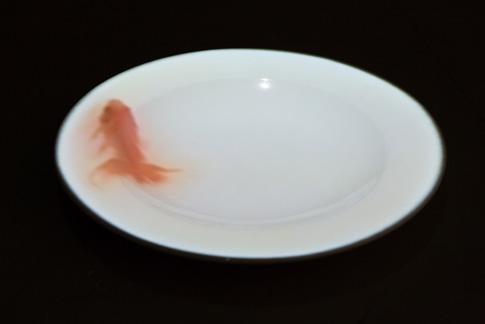
袁广鸣,1965 年生于台湾台北,1997 年毕业于德国卡 斯鲁造型艺术学院,获得媒体艺术硕士学位。目前任 教于国立台北艺术大学新媒体艺术学系教授,也是目 前台湾活跃于国际媒体艺术界中知名的艺术家之一。 1984 年袁广鸣开始从事录像艺术创作。他的作品以象 征隐喻、结合科技媒材的手法,深刻传达出人们当下 的生存状态,并且对人的感知及意识有着极具诗意的 深入展现。1992 年获得台北县美展首奖,2002 年《城 市失格》系列作品,更奠定了在台湾当代媒体艺术界 中不可动摇的地位。 2007 年开始以个人的“居家日常”及“废墟”开创出 一种迷人的剧场式日常;2011 年之后更以多元形式呈 现以“时间与记忆”、“身体与感知”为主题的大型 系列创作;2013 年个展“不舒适的明日”由“家” 的议题延伸至当今在全球化底下的在地生存处境的探 问,思辨现代人的困顿与忧惧;
园”中,直指未来的家已不再是稳固的概念,作品环
袁广鸣
2018 年个展“明日乐
生于
,中国,台北
本件作品为第一次个展中的其中一件录像投影装 置,也是首次尝试投影与实物的录像装置。地上 放置一个白色大瓷盘(直径 42 厘米),借由上方 的投影机投影一条金鱼在此白盘中,虚像犹如实 境,借由极具东方符号的圆形、瓷盘及金鱼,象 征着自身存在的现实及困境,金鱼自在的悠游于 瓷盘中,只不过永远也游不出瓷盘。 A
袁广鸣,《盘中鱼》,1992,单通道录像装置,图片由艺术家和 TKG+ 画廊(台北)提供。
1965
b. 1965, Taipei, China
Yuan Goang-Ming, Fish on Dish 1992, single-channel video installation, image courtesy of the artist and TKG+ (Taipei).
生于 1968,中国,杭州
b. 1968, Hangzhou, China
Born in 1968 in Hangzhou, Zhejiang, Yang Zhenzhong has been living and working in Shanghai for more than 20 years with a career closely related to the development of new media art around the area. Since the end of 1990s, he has been curating and organizing numerous highly influential contemporary art exhibitions with artists including Xu Zhen and Yang Fudong etc. They have not only enlivened the atmosphere of the new media art industry in Shanghai, but also promoted the artist himself to stage on an international platform. The key themes of YANG’s works are to strengthen the contradictions and disorders existed in the society with a cynical attitude on one hand, to utilise the perception of the space in political and psychological levels on the other hand. Now mainly focuses on the creation of new media like video, photograph, installation work and interaction etc., and curating as well.

Selected solo exhibitions include: Eternal Return | Вечное возвращение |, Moscow Manege Museum and Exhibition Association, Russia (2014); Background, No.12 DRC, Beijing (2018); Trespassing, YANG Zhenzhong Solo Exhibition, OCT Contemporary Art Terminal, Shanghai (2013); Don't Move, Yang Zhengzhong Solo Exhibition, ShanghART, Beijing (2011); YANG ZHENZHONG, Ikon Gallery, Birmingham, U.K. (2006); Light As Fuck!, BizArt, Shanghai (2002); Selected group exhibitions include: Art and China after 1989: Theater of the World, Solomon R. Guggenheim Museum, New York, U.S.A. (2017); Our Bright Future: Cybernetics Fantasy, Nam June Paik Art Center, Yongin-si, Korea (2017); Consumer, Salon 1.618, Palais de Tokyo, Paris, France (2009); Global Cities, Turbine Hall, Tate Modern, London, U.K. (2007), etc. The artist’s works have previously been exhibited in numerous prominent exhibitions including Venice Biennale, Shanghai Biennale, Gwangju Biennial, Asia Pacific Triennale of Contemporary Art, Lyon Biennale, and so forth. His works can also be found in the collection of significant public and private institutes such as MoMA New York, Ikon Gallery (U.K.), Fukuoka Asian Art Museum, Musée National d’Art Moderne, and the UBS Collection.
Fish Bowl (1996) is the first work in which Yang addresses contradiction between performers’ acts and utterances. In this video installation, three TV monitors are stacked vertically, and the bottom one is placed inside a fish tank with a couple of small water pumps. On each monitor, a close-up image of a mouth (the artist’s) utters the words “We are not fish” in Chinese. At first glance, the shape and color of the mouths suggest that of goldfish, so that the act performed resembles the act of a fish. This visual resemblance reflects and extends the installation context of water tank and bubbling sounds. Not only does the mouth resemble a fish, the exhibited environment also suggests water and sea life. On the other hand, the utterance (”we are not fish”) of the “mouths” belies what these mouths appear to express.

杨振中,1968 年生于浙江杭州,现工作生活于上海。 从上世纪九十年代未起,他与徐震等艺术家们独立策 划了十多场极具影响力的新媒体当代艺术展,不仅大 大活跃了上海的新媒体艺术氛围,自身的艺术也由此 迈向国际艺术舞台。杨振中创作的核心主题,一方面 是以玩世不恭的态度强化社会中存在的大量矛盾与错 乱,另一方面则是对空间的感知以及在政治和心理层 面的空间利用。现从事录像、摄影、装置、互动等新 媒体艺术创作与展览策划。 重要个展包括:背景墙,外交公寓 12 号空间,北京 (2018);始终,莫斯科 MANEGE 美术馆及展览协会, 俄罗斯(2014);不在此时,OCT 当代艺术中心,上 海( 2013 );不要动,香格纳北京( 2011 );杨振 中, Ikon 美术馆,伯明翰,英国( 2006 );轻而易 举,比翼艺术中心,上海( 2002 )。重要群展包括:
泰特美术馆,英国(
威尼斯双年展、上海双年展、光州双年展、亚太当 代艺术三年展、里昂双年展、等国际大展,亦被纽 约 MoMA 、英国
法国国家现代艺术博物馆、瑞银集团等重要公私艺 术机构所收藏。 杨振中
1989 年之后的艺术与中国:世界剧场,古根海姆博 物馆,纽约,美国( 2017 );我们光明的未来:控 制论幻想,白南准艺术中心,韩国( 2017 );消费: 1.618 沙龙巴黎东京宫,法国( 2009 );全球化城市,
2007 )等。其作品不仅参加了
ikon 美术馆、日本福冈亚洲美术馆、
Yang Zhenzhong
杨振中在这个作品中第一次突出表现了表演者的 言行矛盾。这是一个录像装置作品,三台监视器 垂直堆成一竖排,最底下一台被放在一个鱼缸里, 鱼缸里有两个小水泵。每个监视器上显示的都是 一个嘴部近景特写,这其实是艺术家自己的嘴, 他用中文说着:我们不是鱼。乍看之下,嘴的形 状和颜色都近似金鱼,似乎艺术家表现的是鱼的 独白。视觉上嘴和鱼的相似,以及作为背景的水 缸和吐泡泡的声效,都意指这是一条鱼。但另一 方面,“我们不是鱼”这句话却试图掩饰表面上“嘴” 表现出的身份。
杨振中,鱼缸,录像装置(3 台电视机,一台录像机,一只玻璃鱼缸,方钢 )30 分钟(彩色,有声),循环播放,1996,作品由艺术家提供
fish
Yang Zhenzhong, Fish Bowl, Video installation (Three monitors, a video machine, a concave glass
bowl, iron), 30 00 (colour, sound), looping, 1996, Courtesy of the artist

地址:北京市朝阳区酒仙桥北路9号 恒通国际创新园-C7 Address: Universal Creative Park-C7,No.9 Jiuxianqiao North Rd.,Chaoyang District,Beijing 主办:北京民生现代美术馆 协办:OCAT 上海馆 北京民生文化艺术基金会 Organizor: Beijing Minsheng Art Museum Co-organizor: OCAT Shanghai, Beijing Minsheng Foundation for Arts and Culture 展厅开放时间 /Opening hours 周二—周日(周一闭馆 / Close on Monday ) 10:00-18:00 闭馆前 30 分钟停止入场 No entrance 30min before closure












 / Kim Machan)
/ Kim Machan)



















































